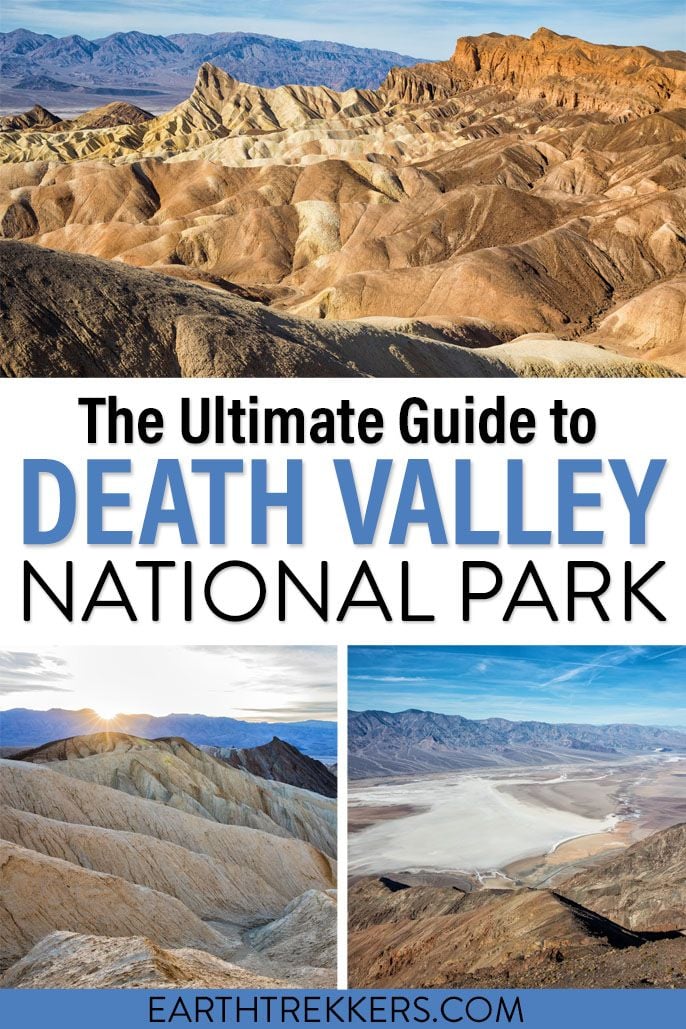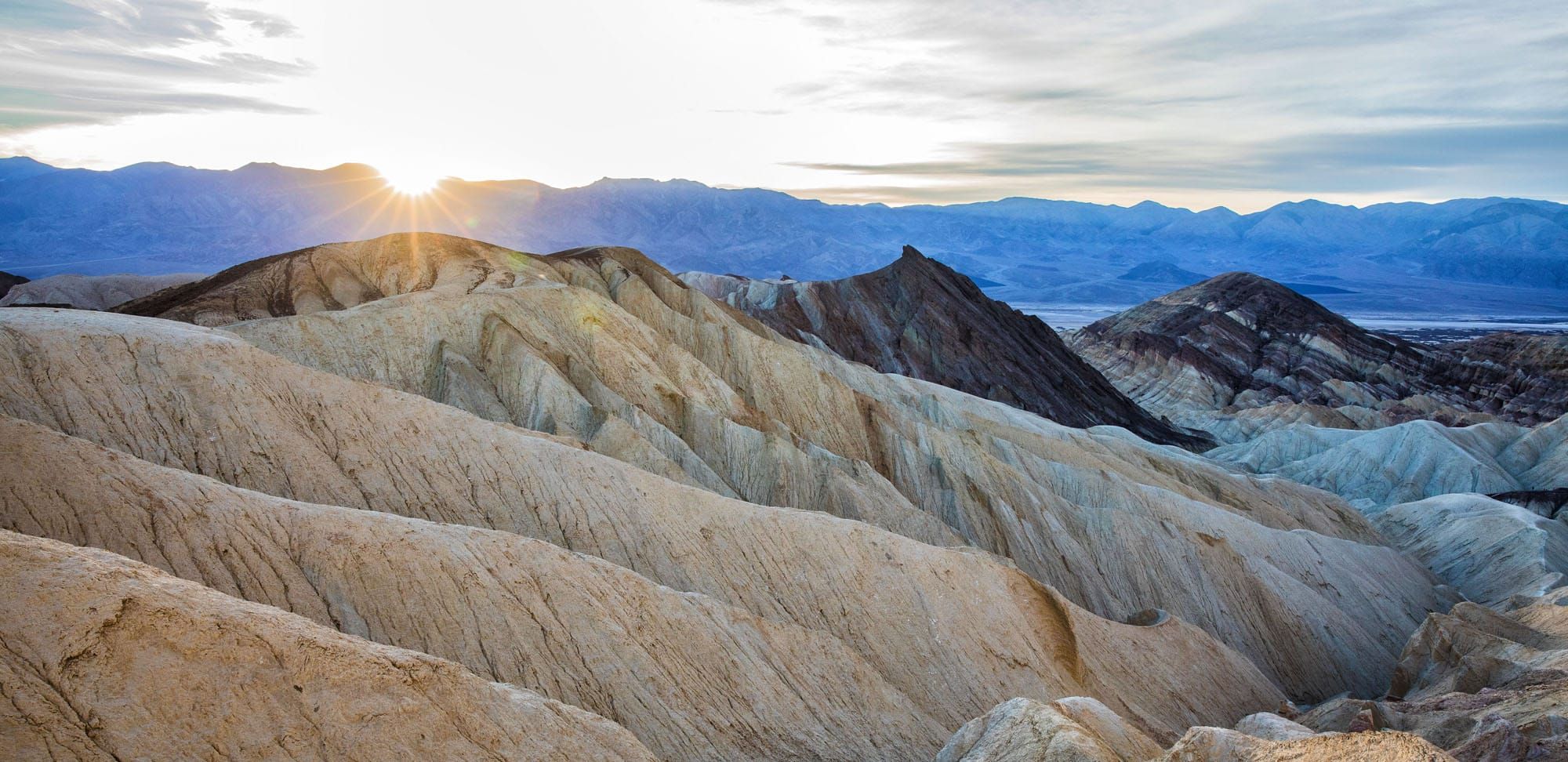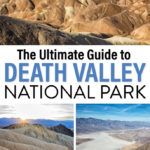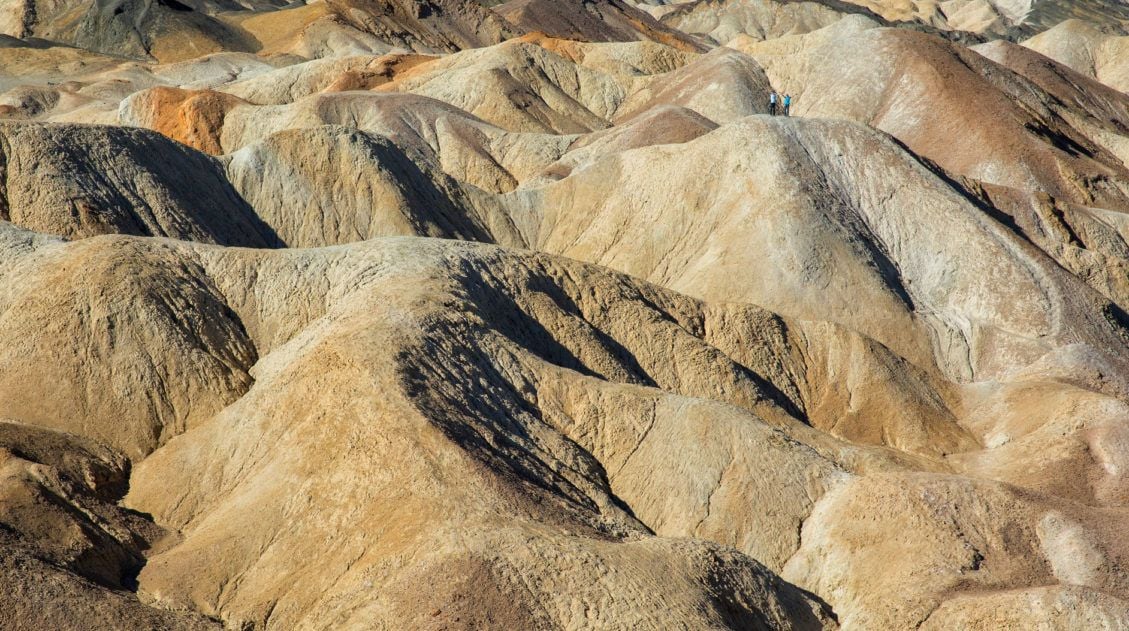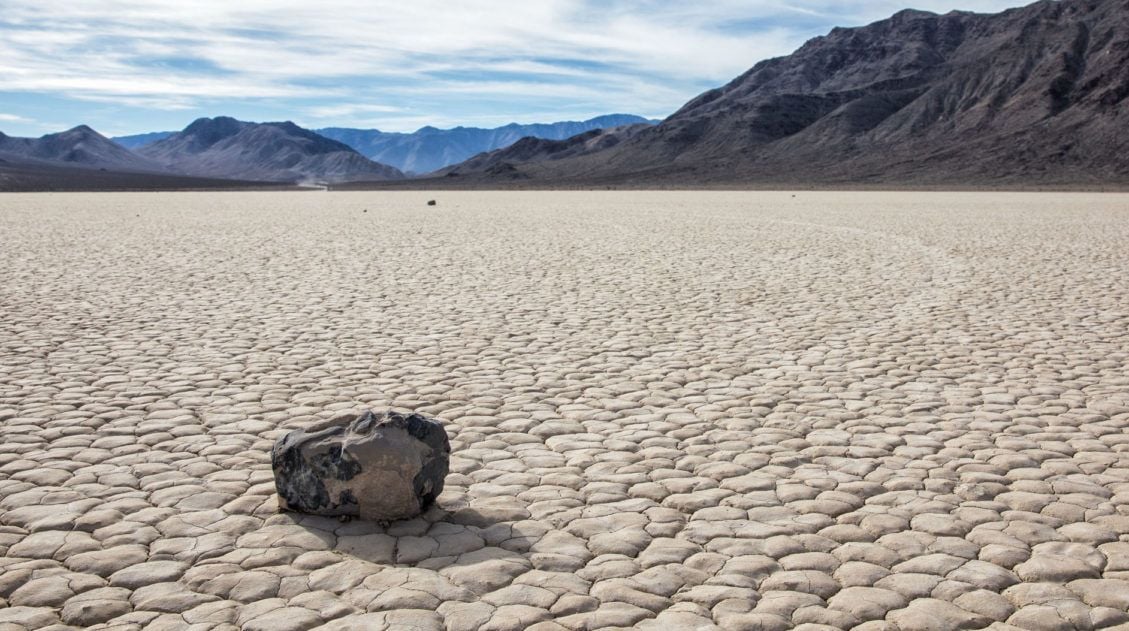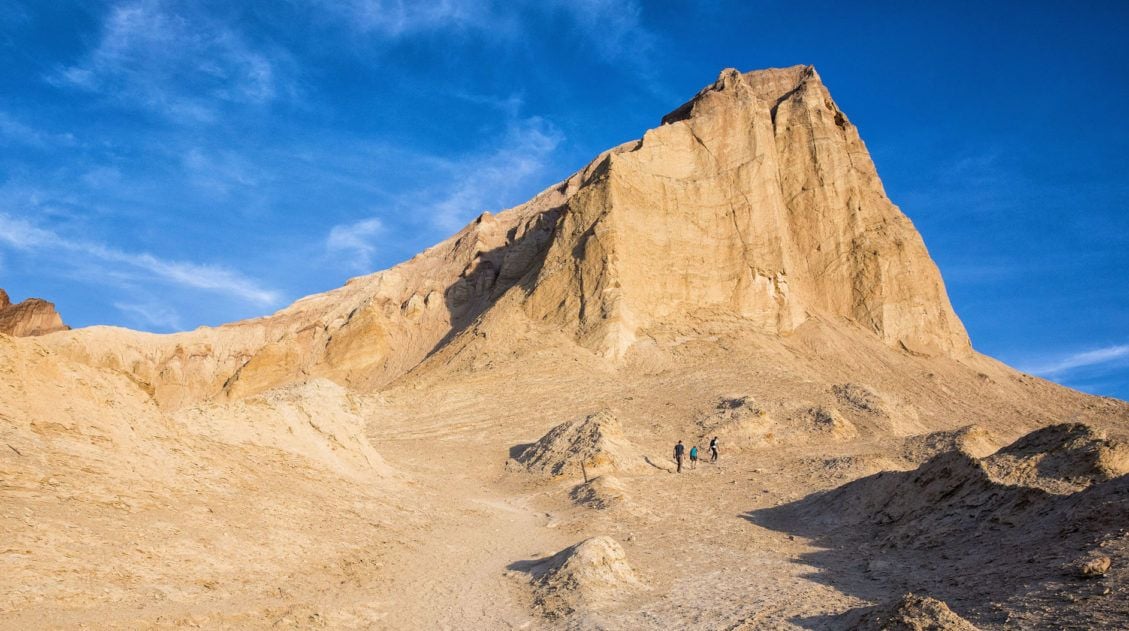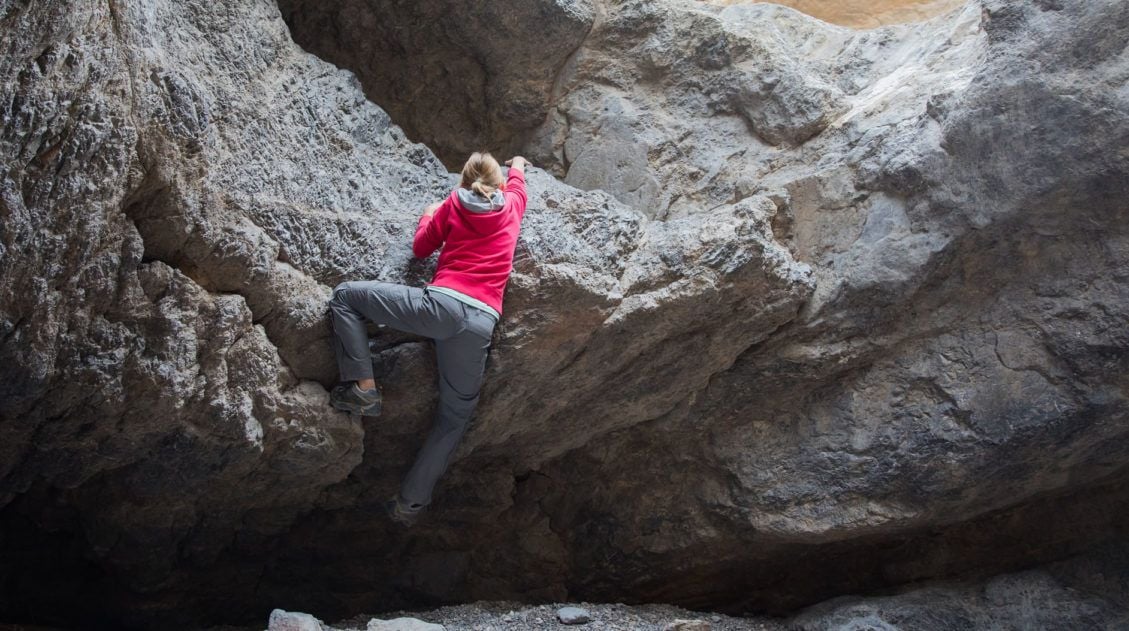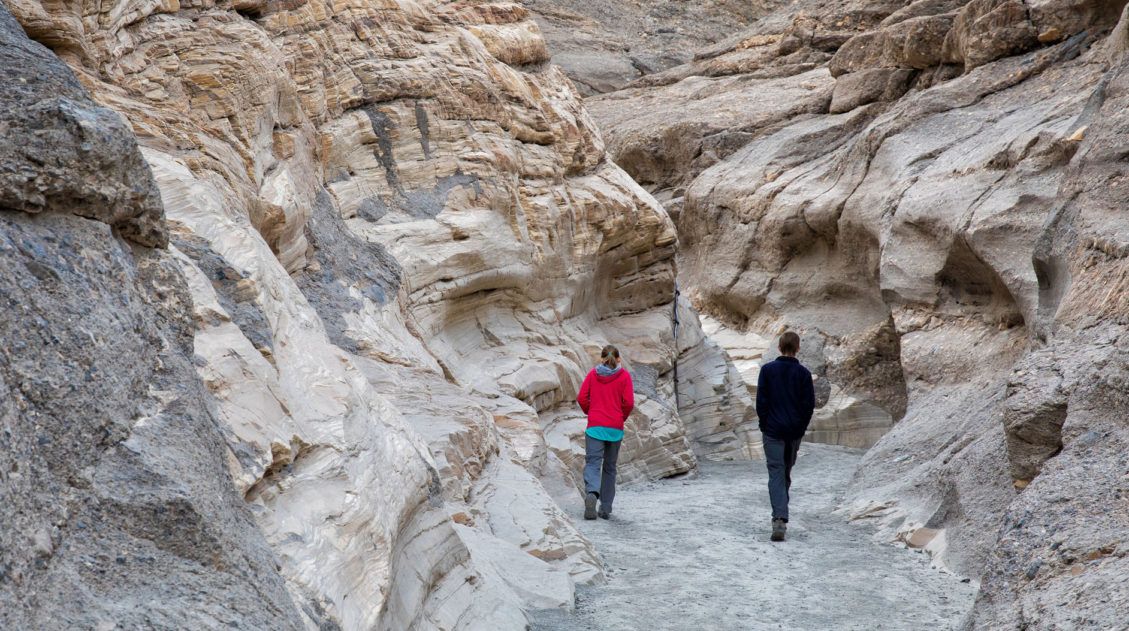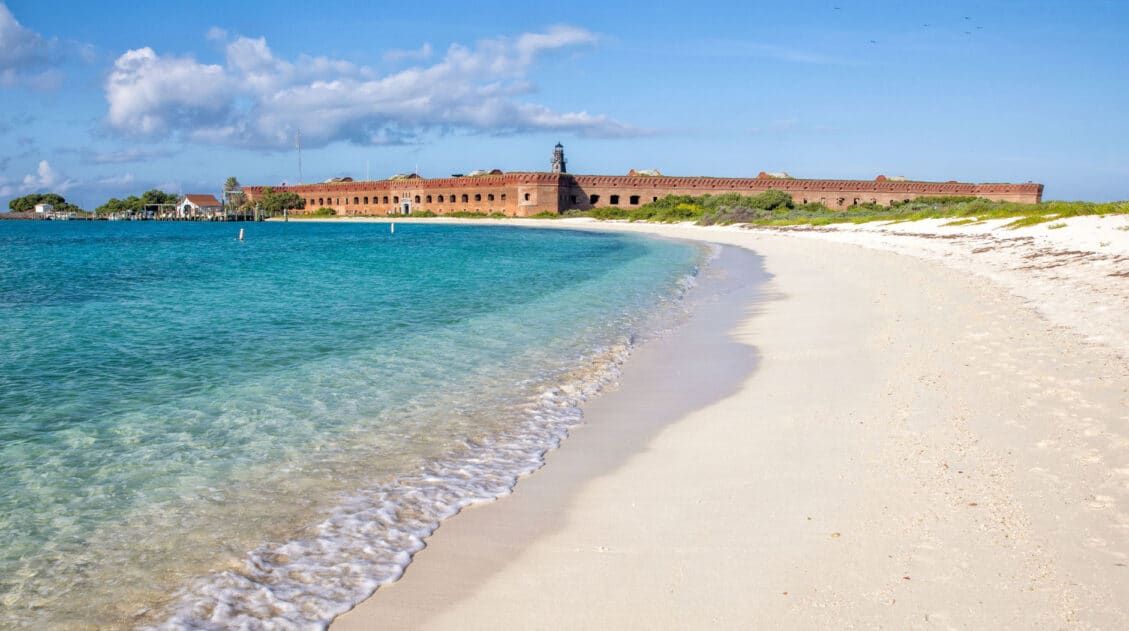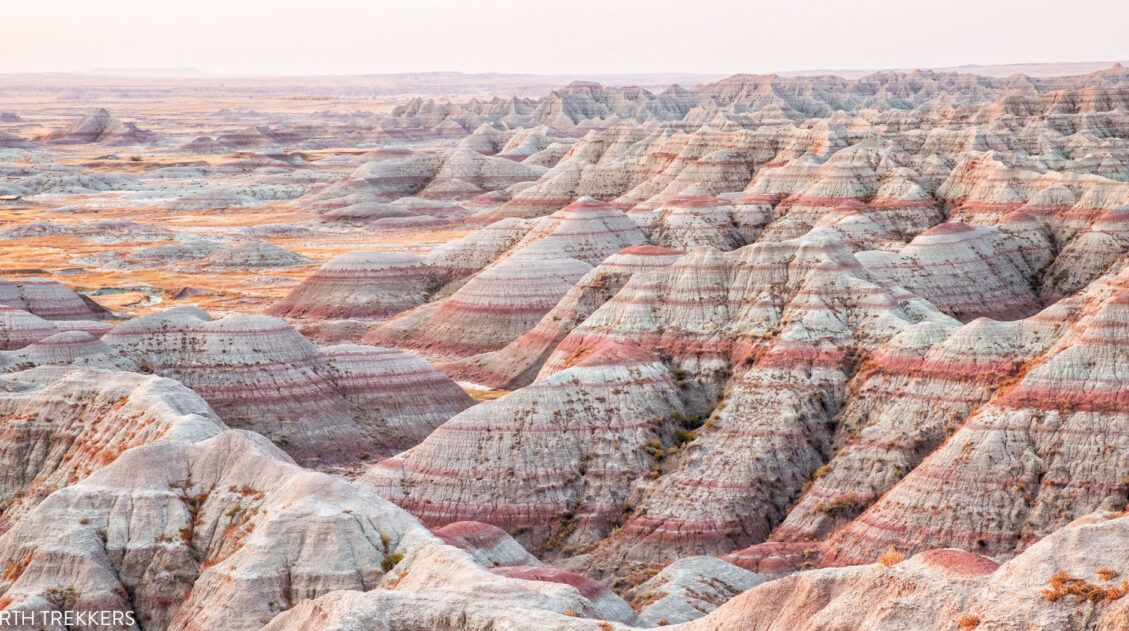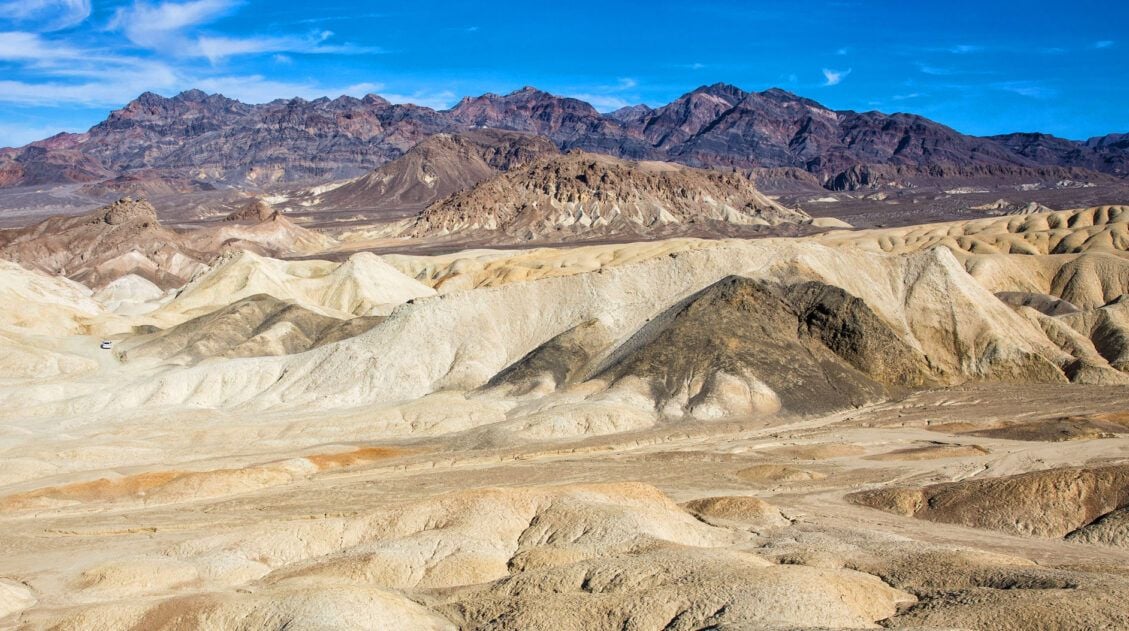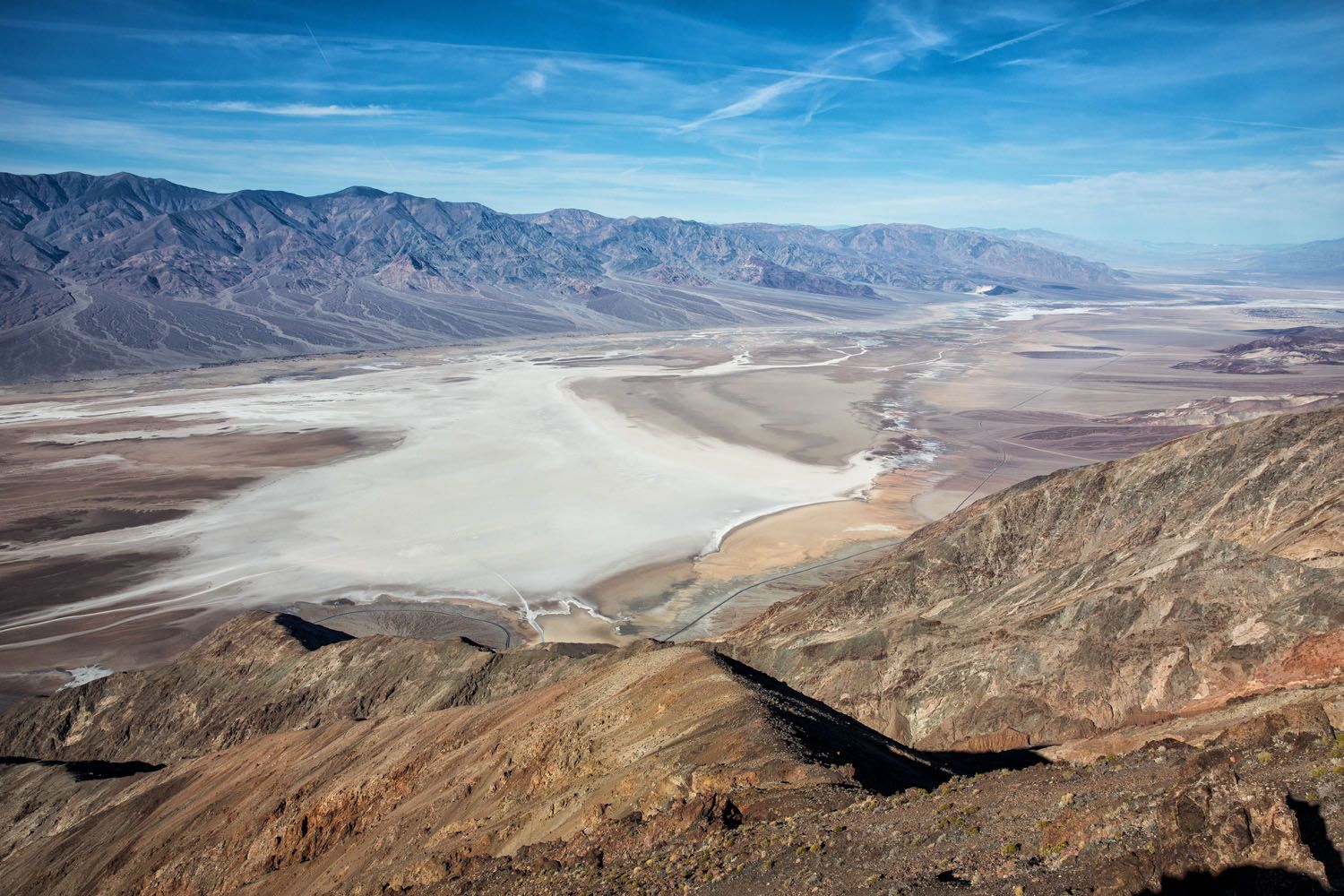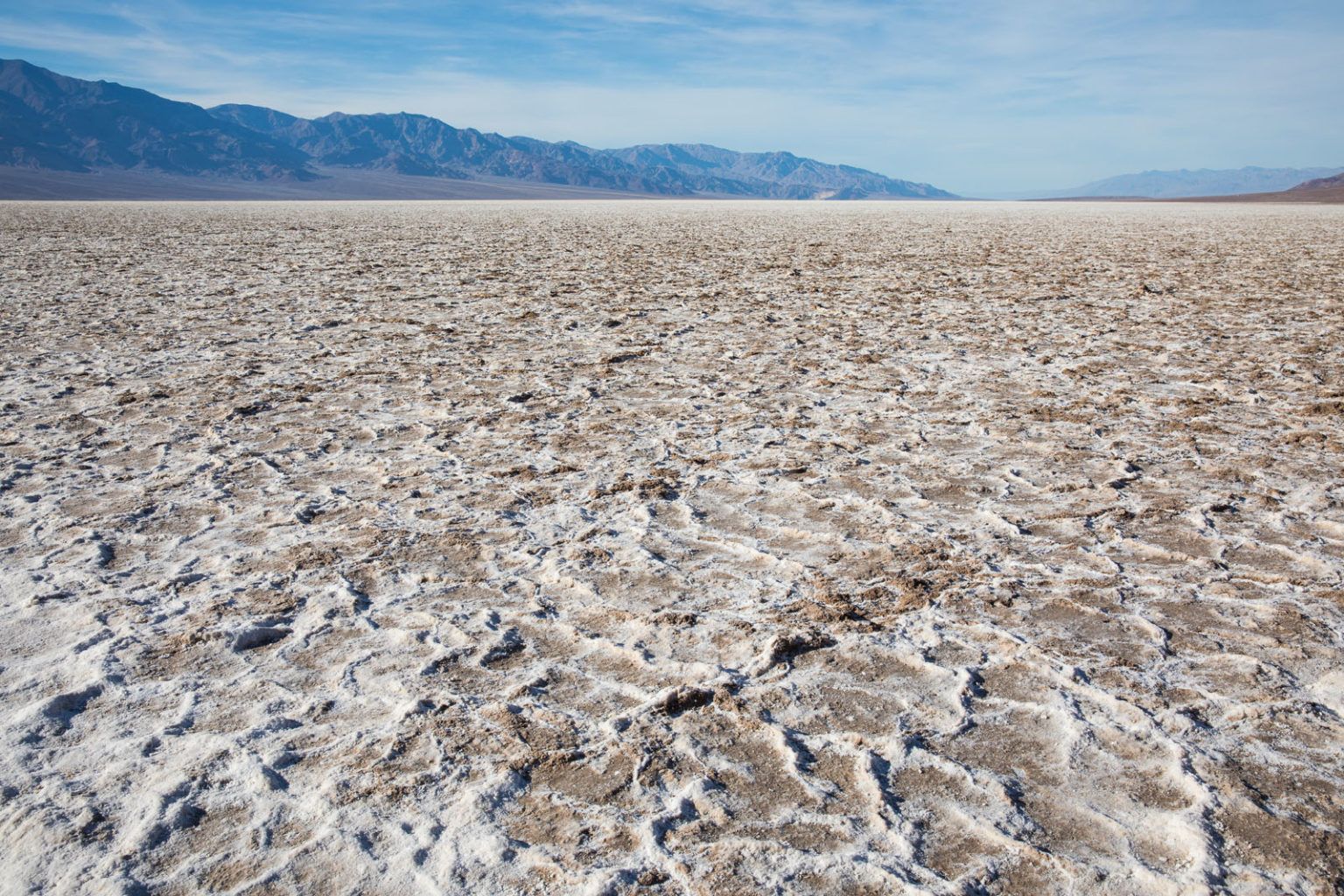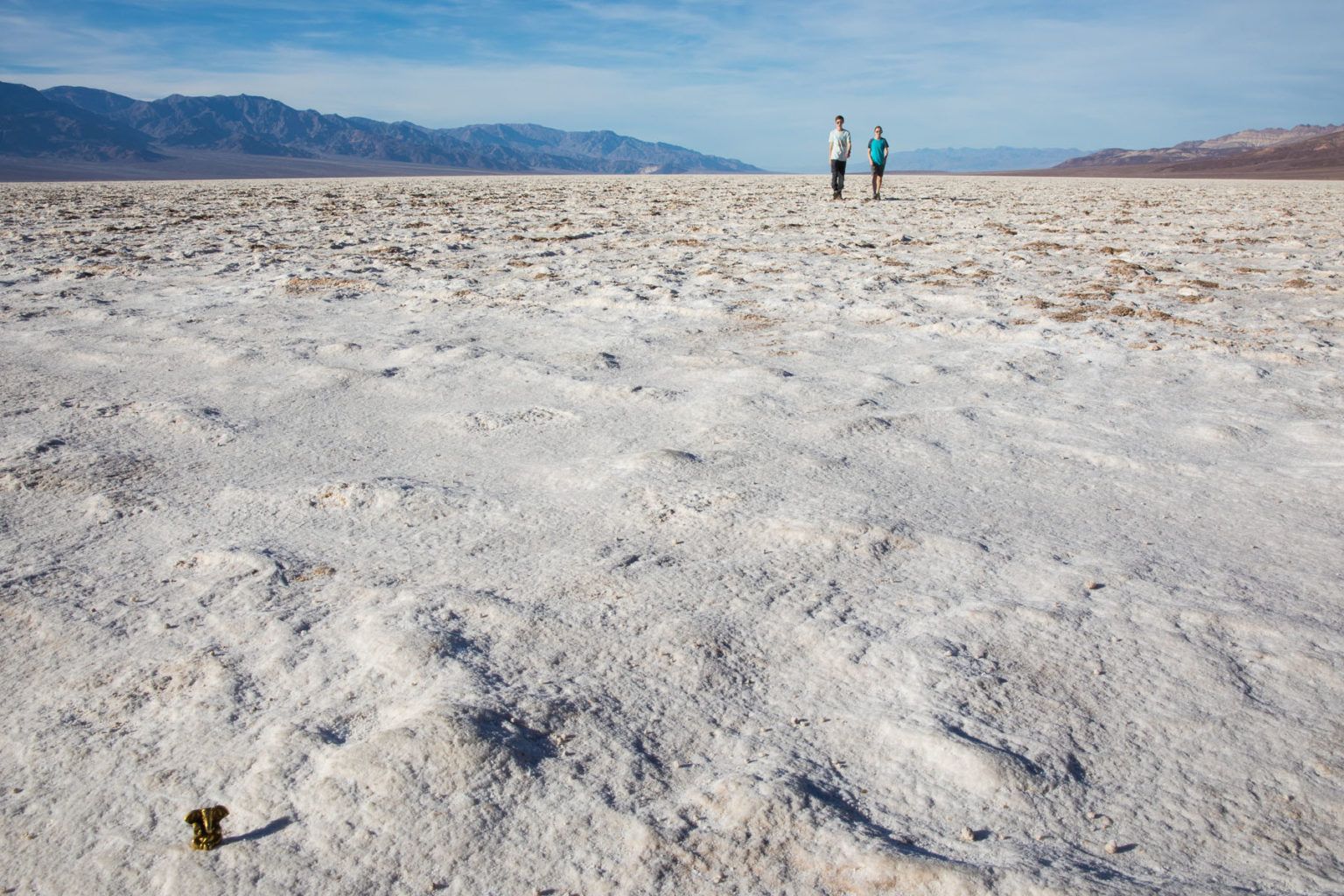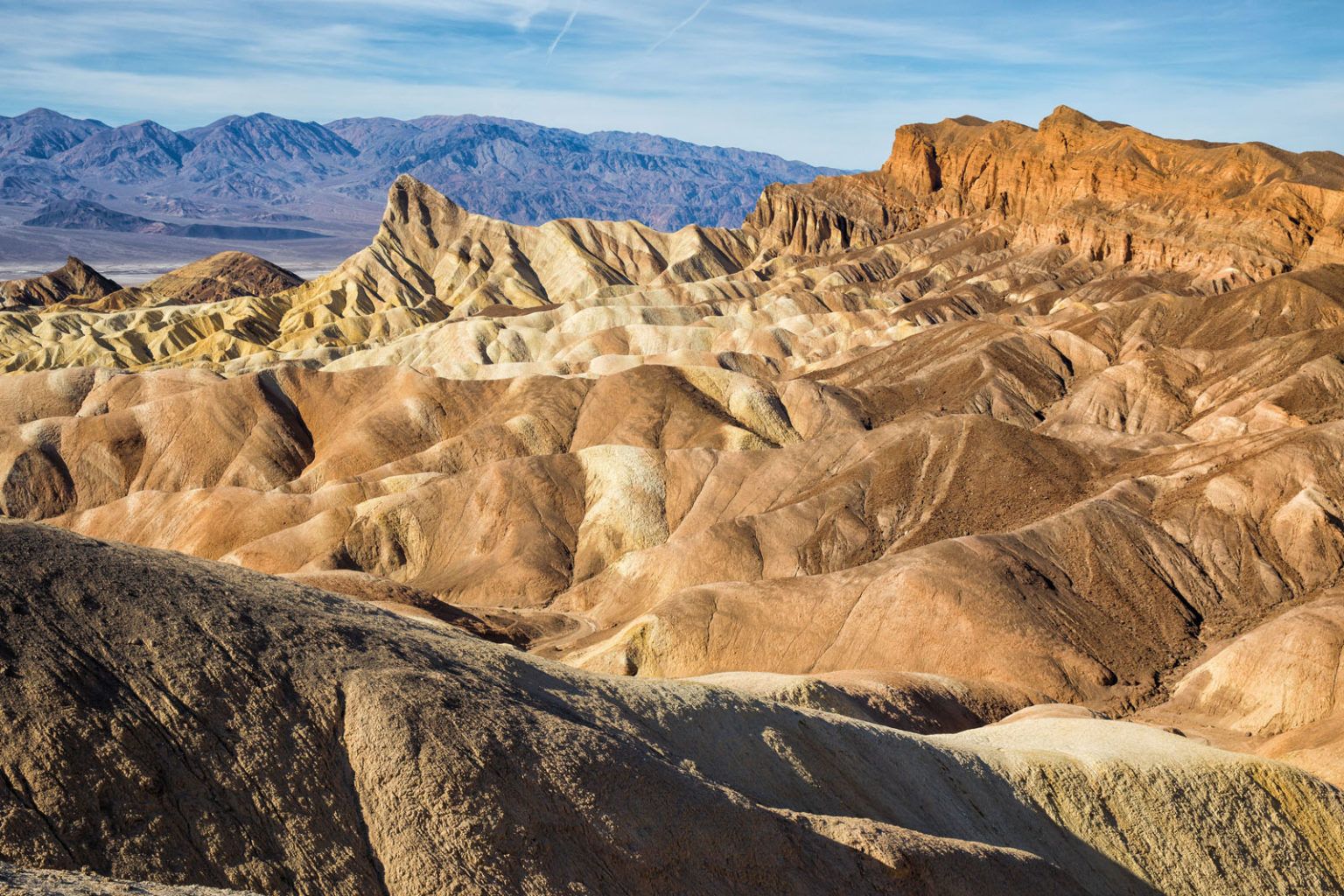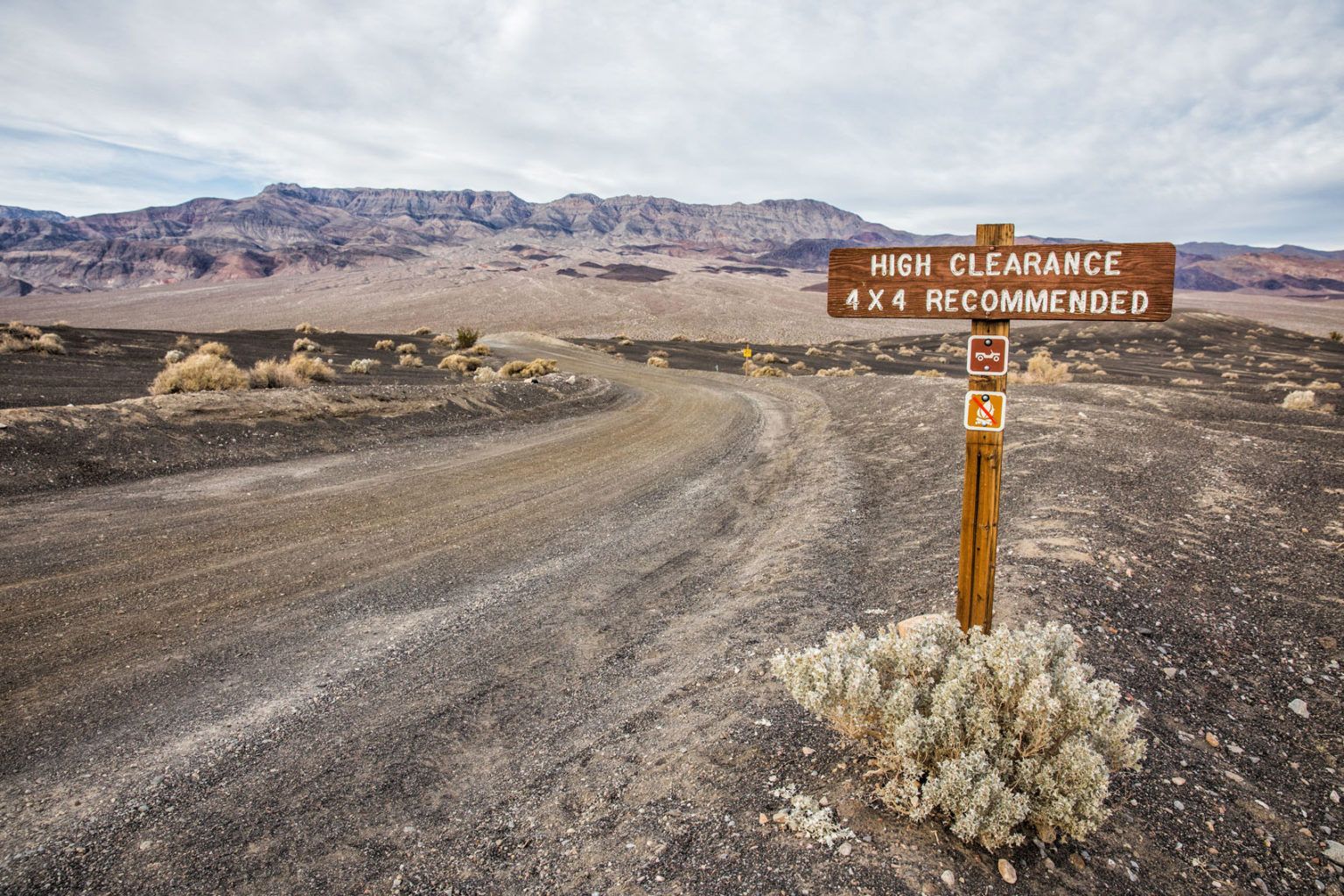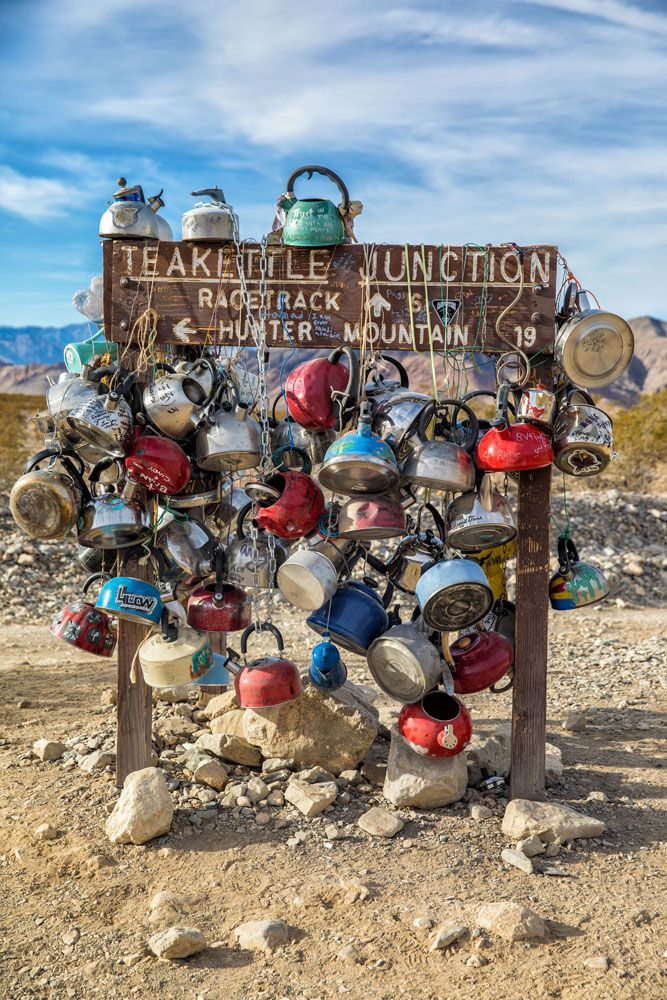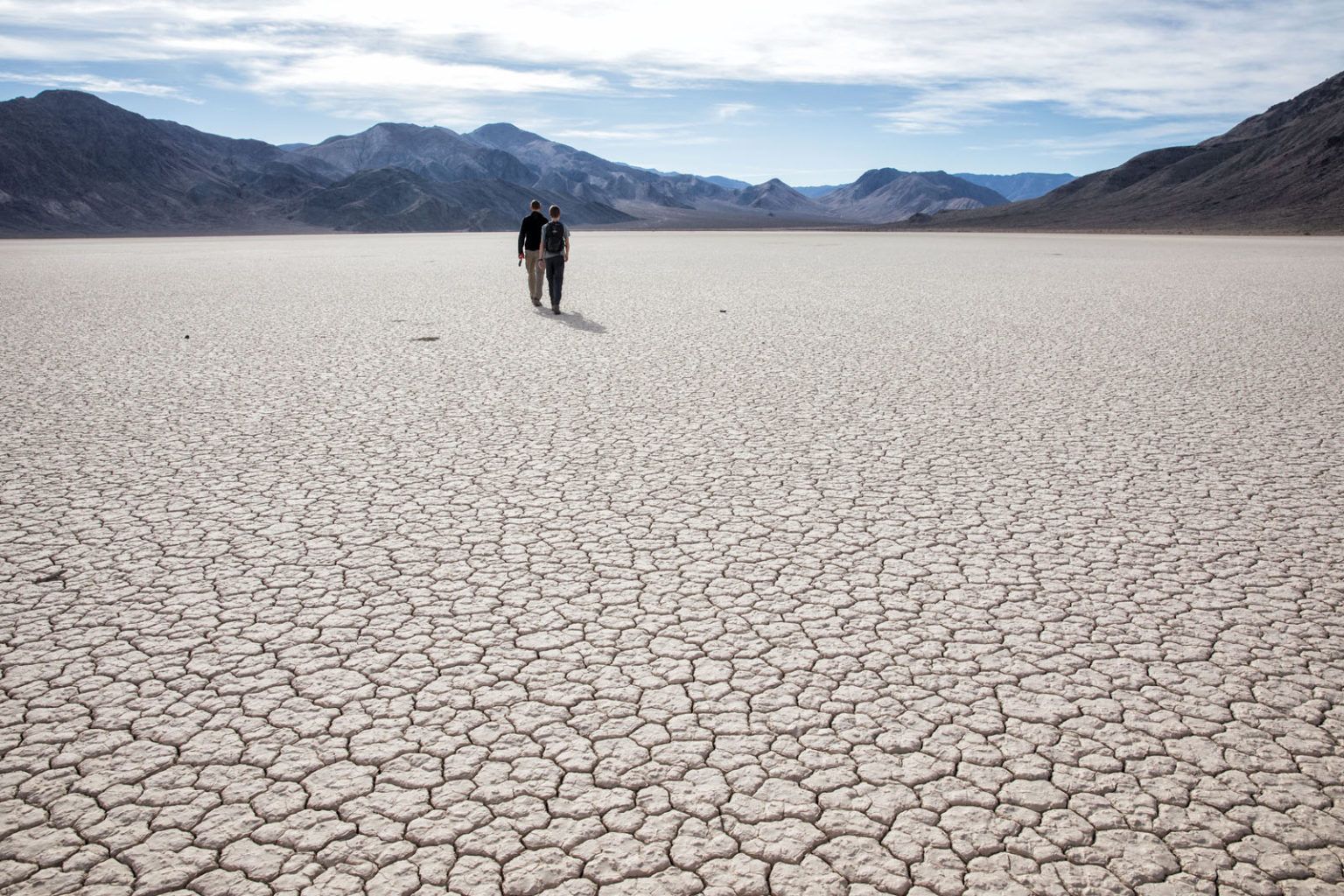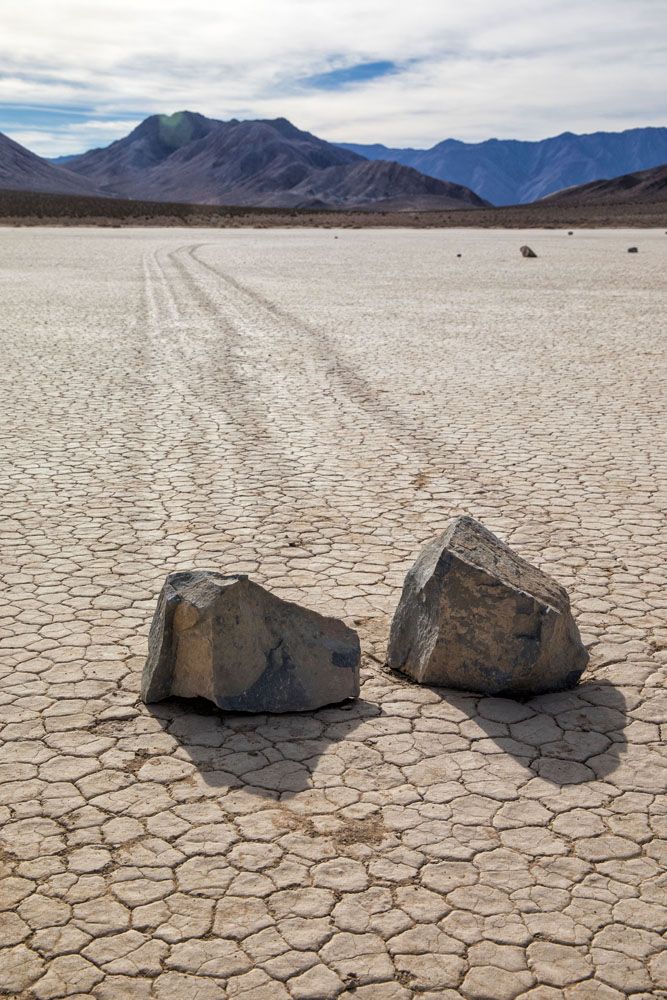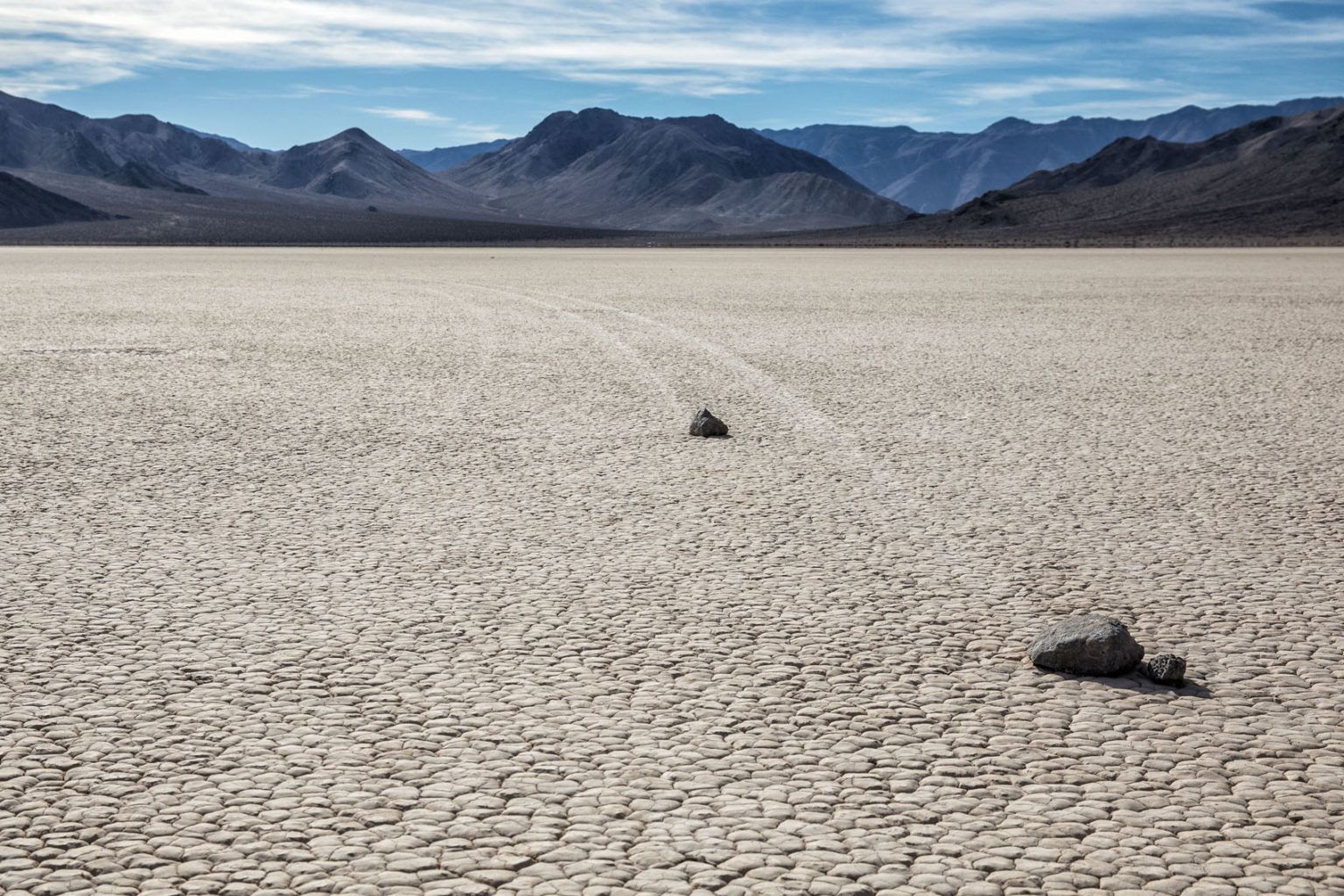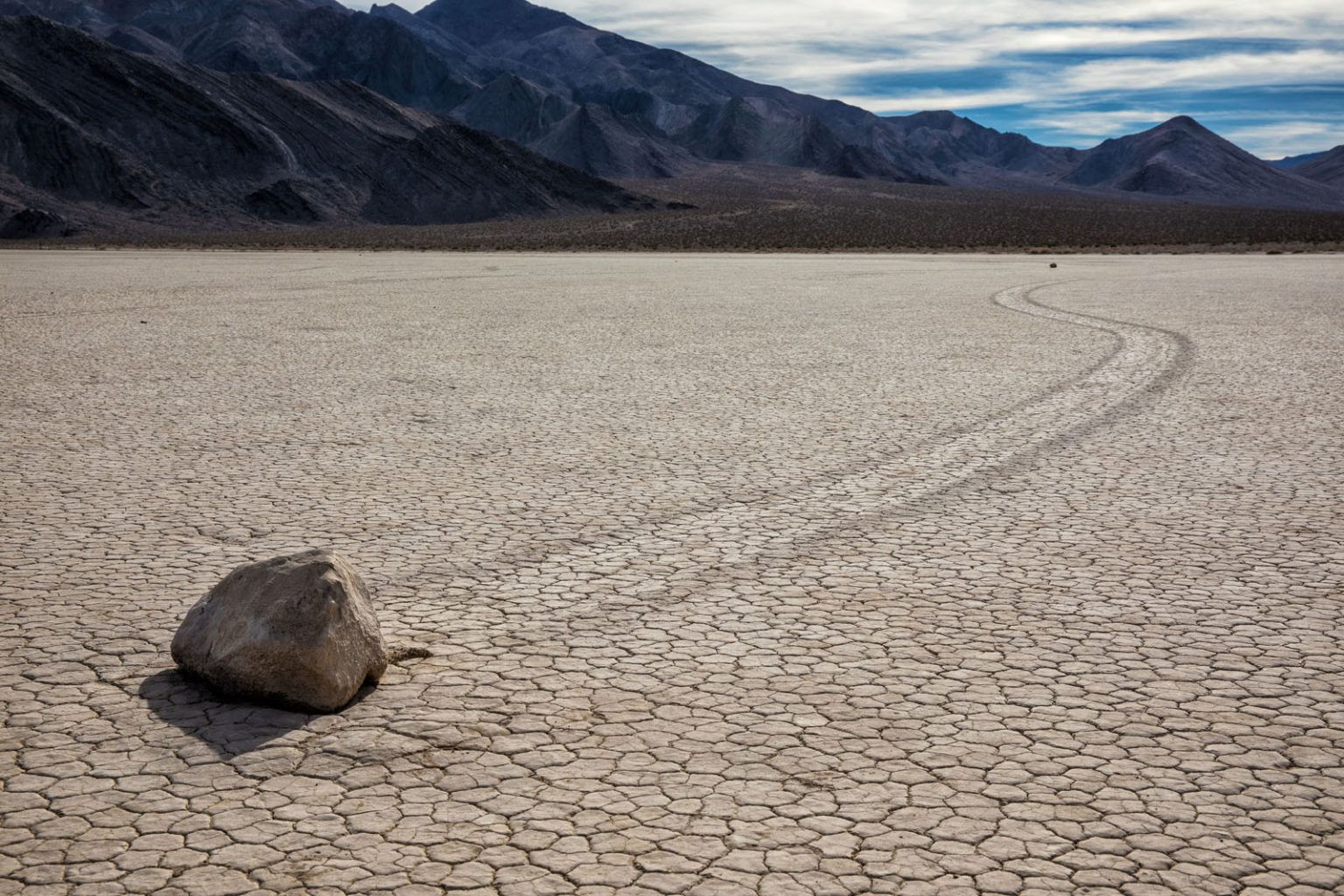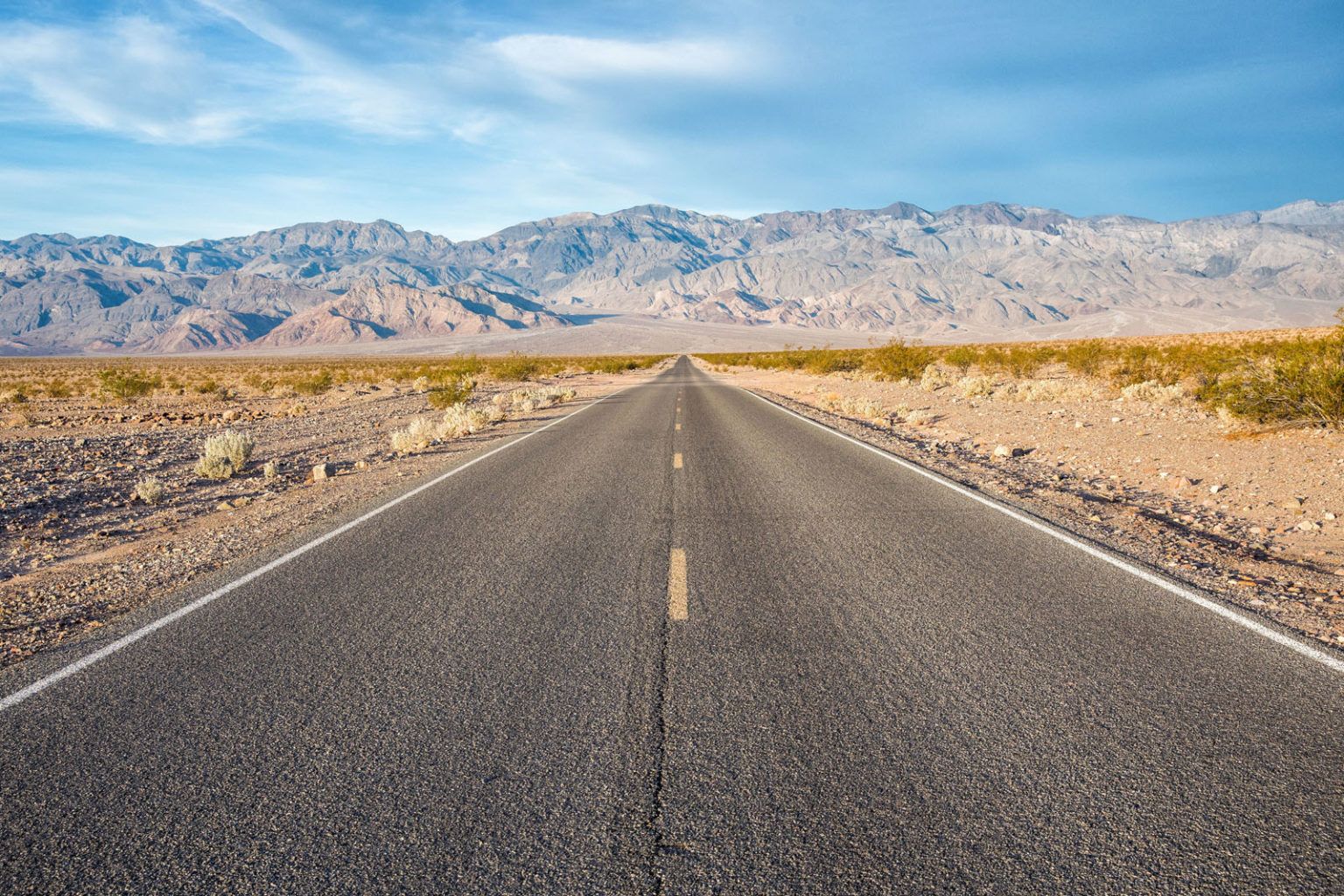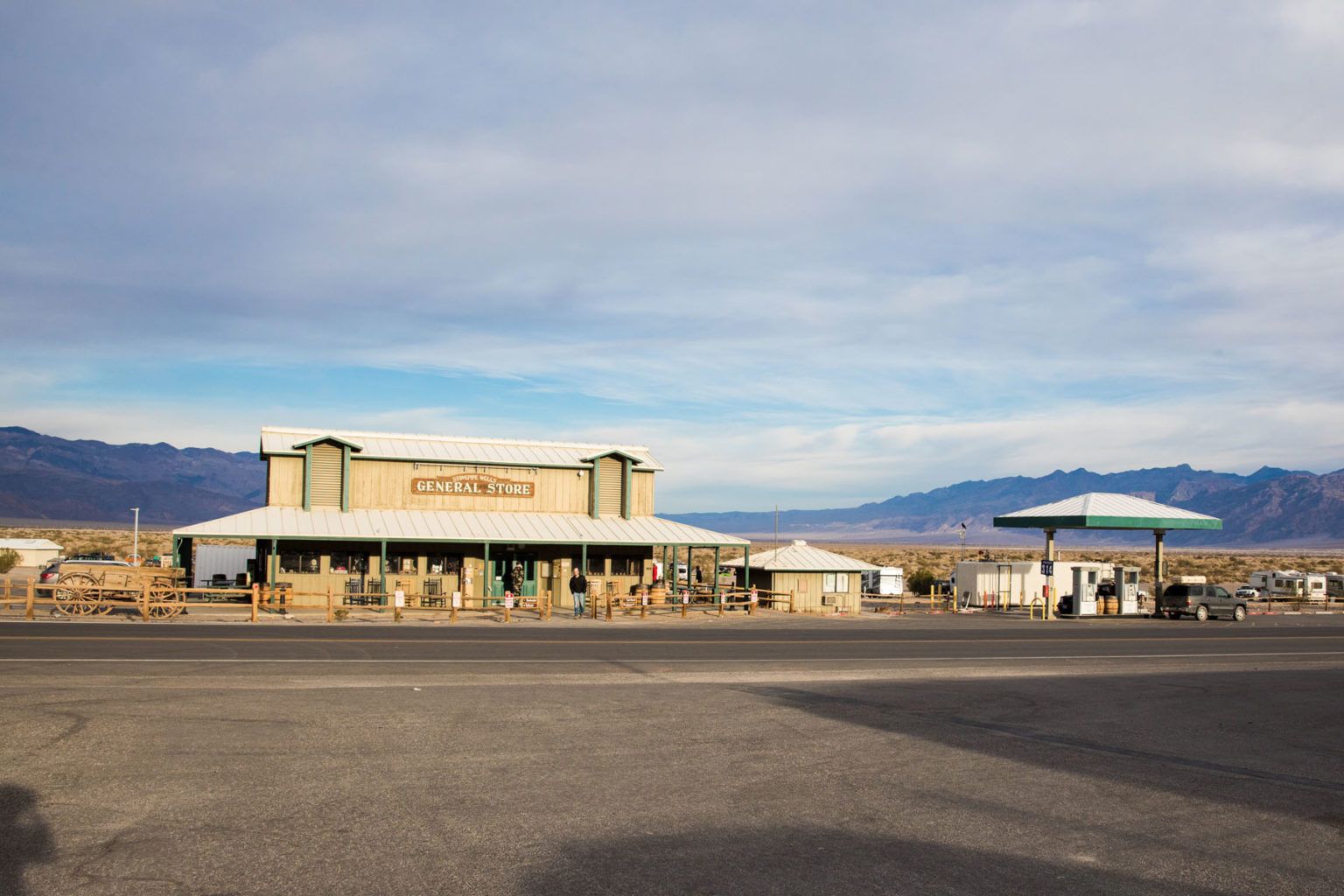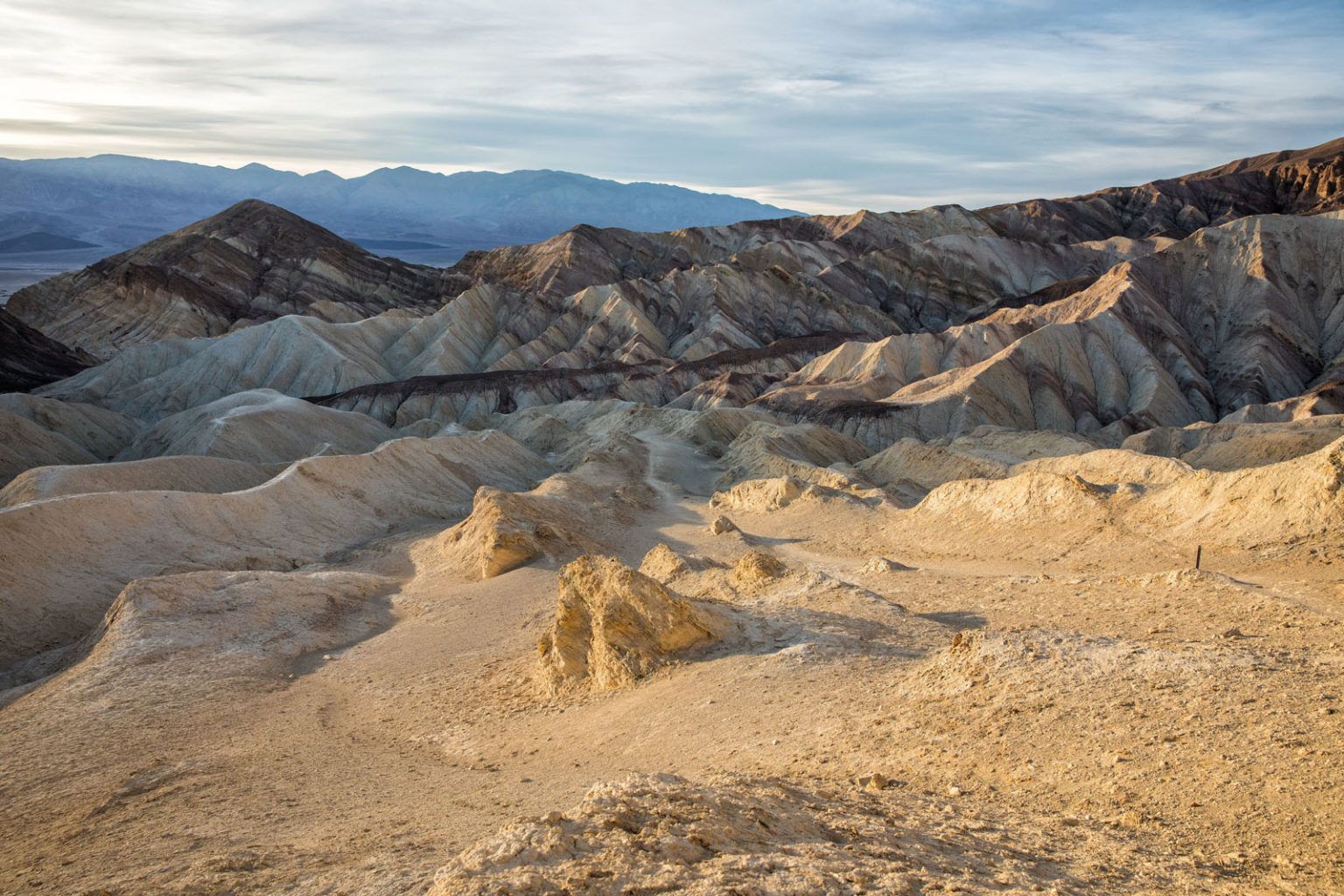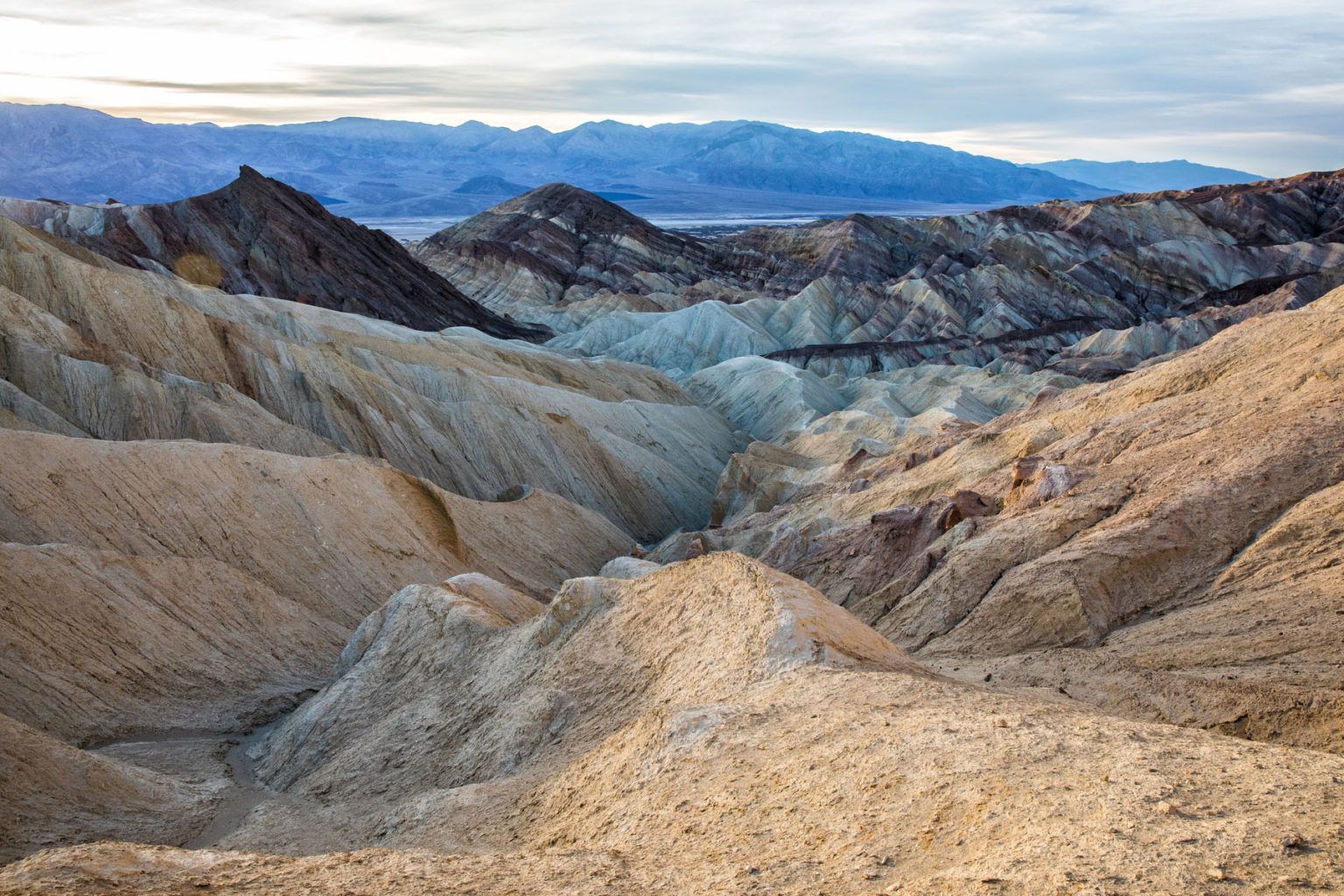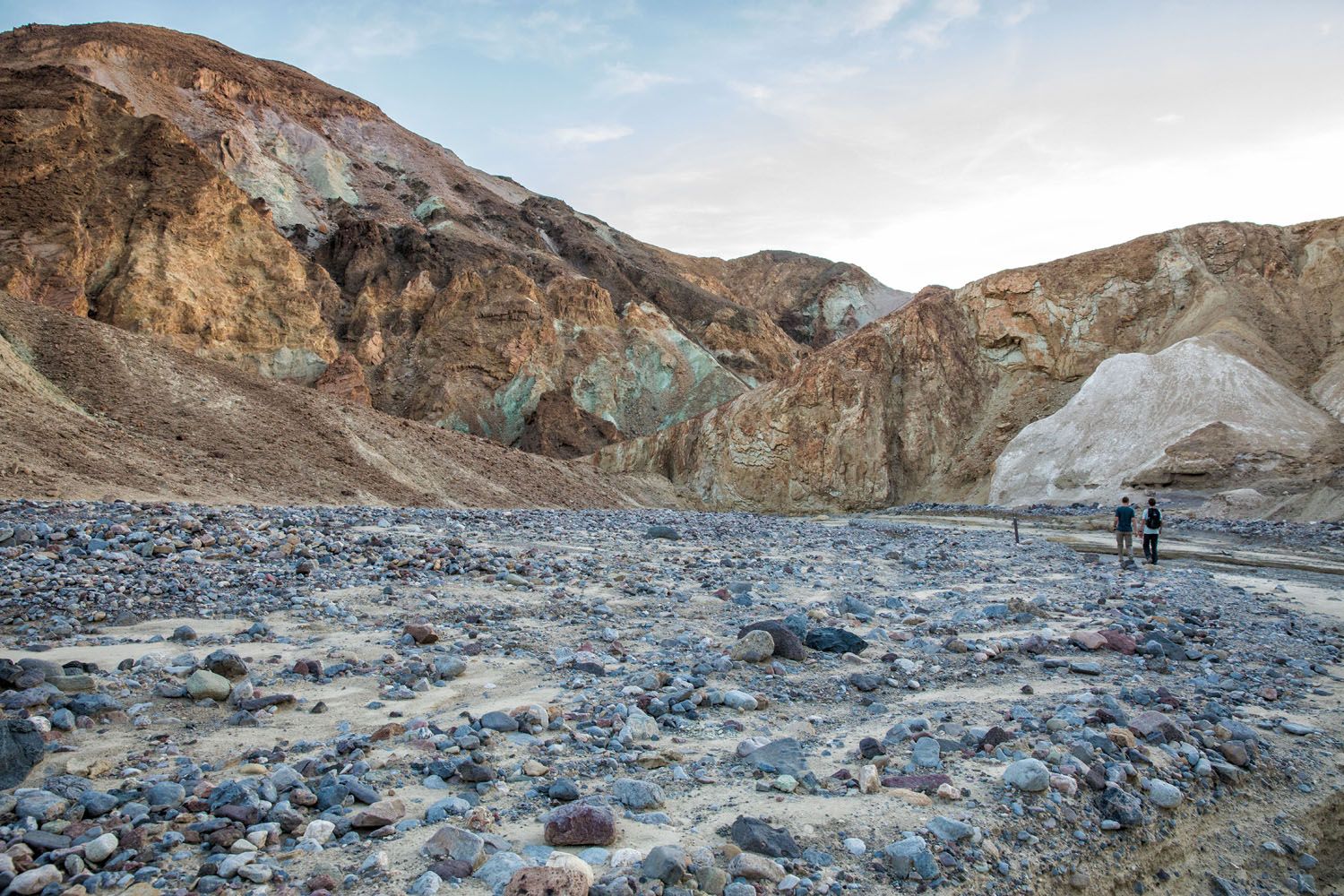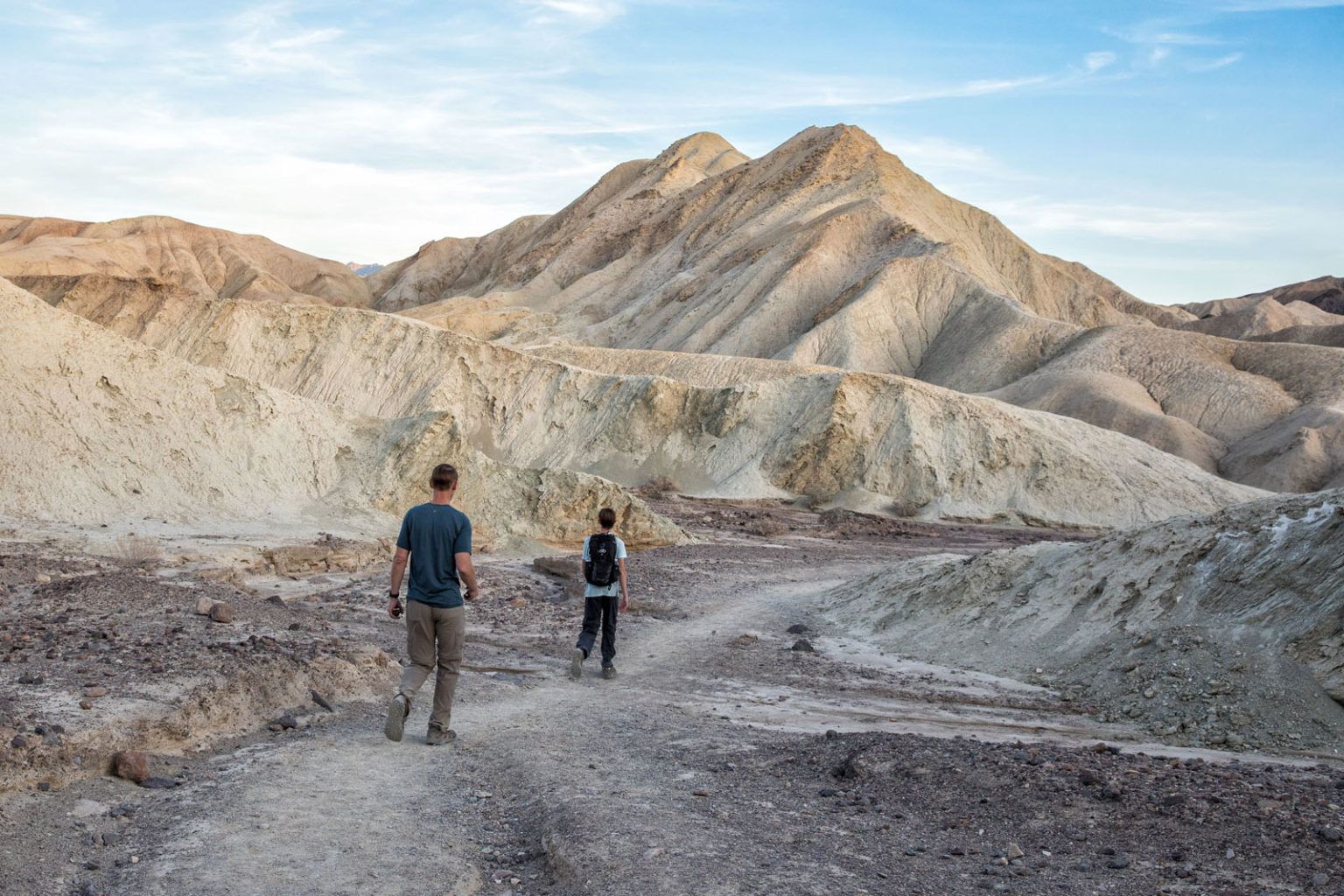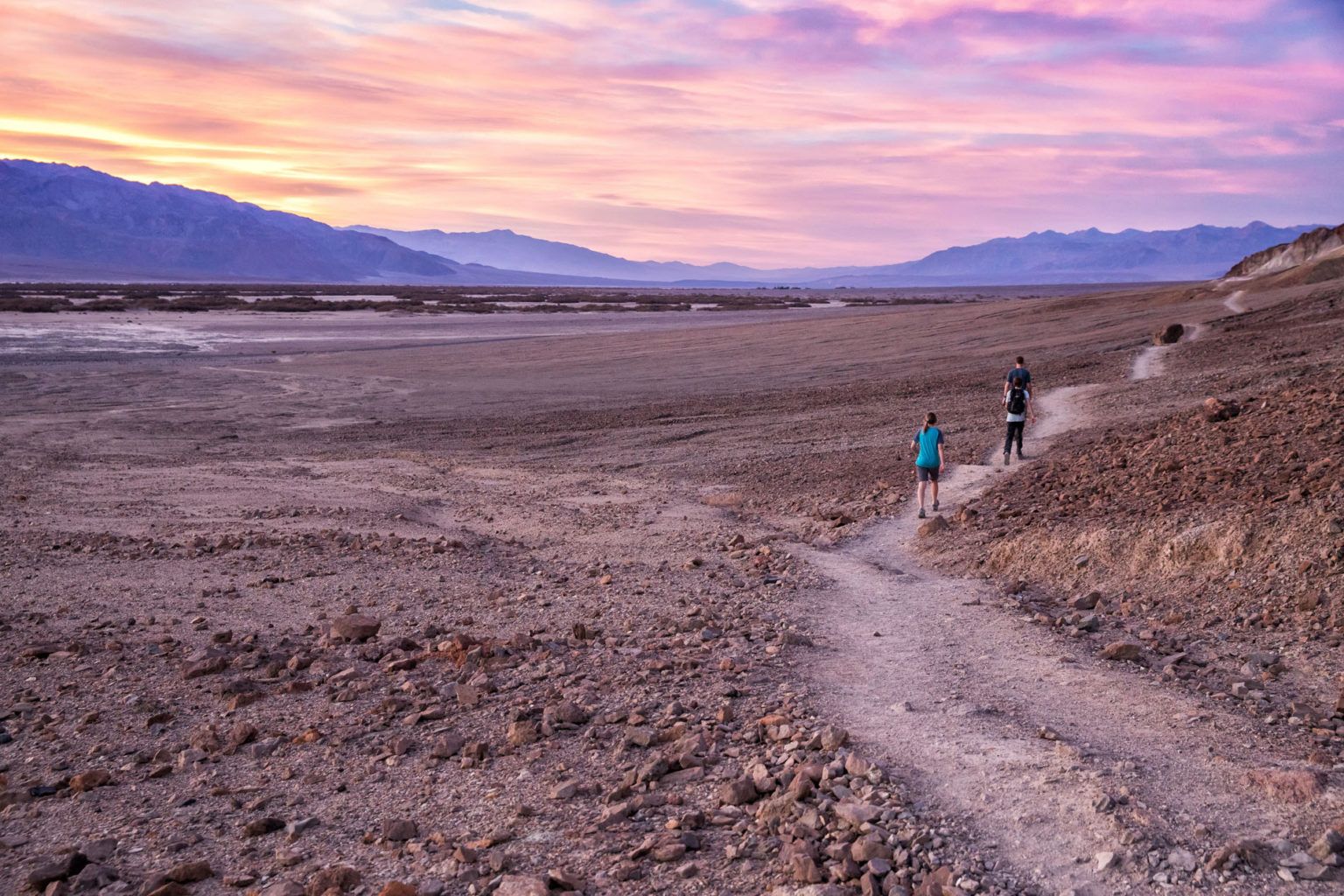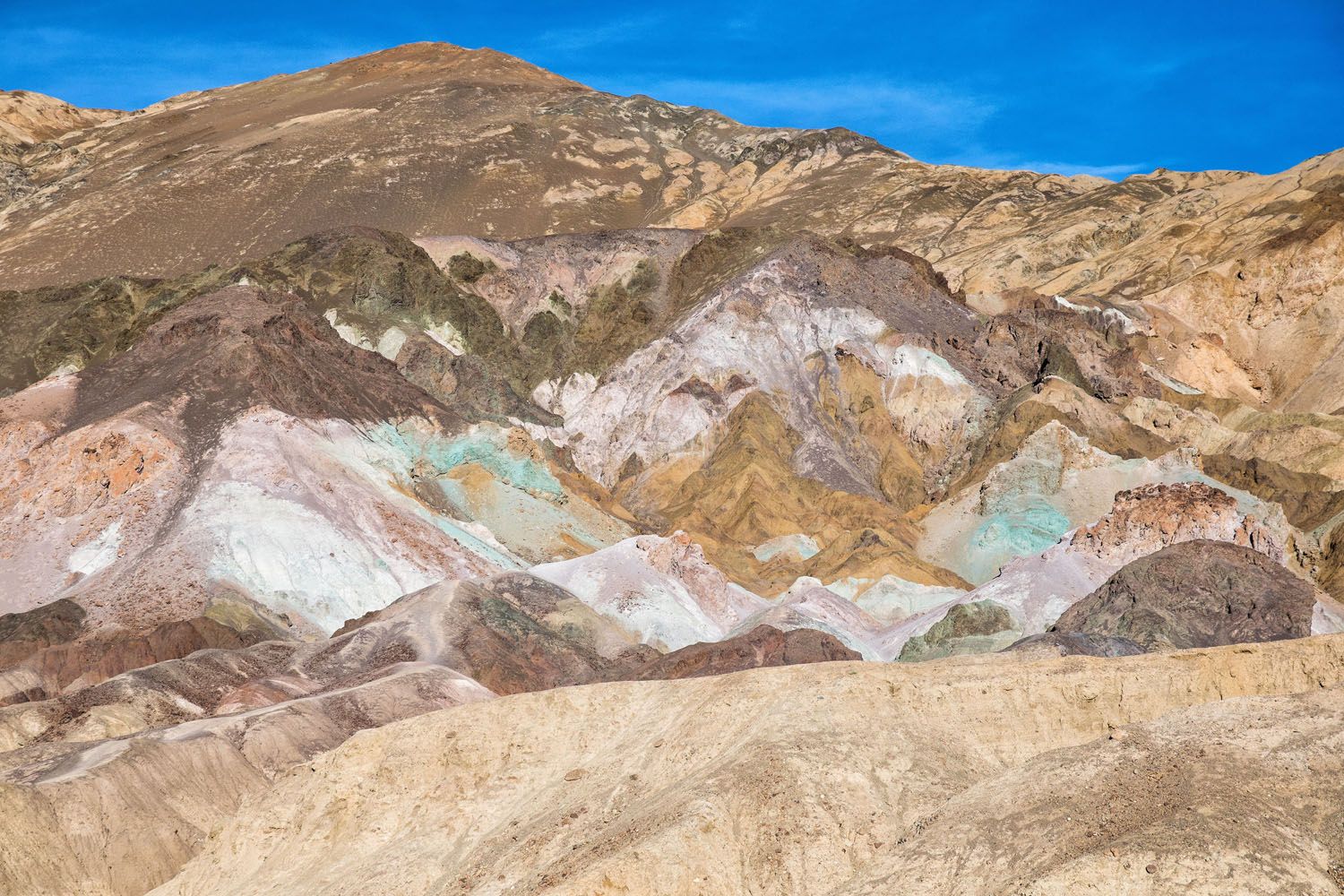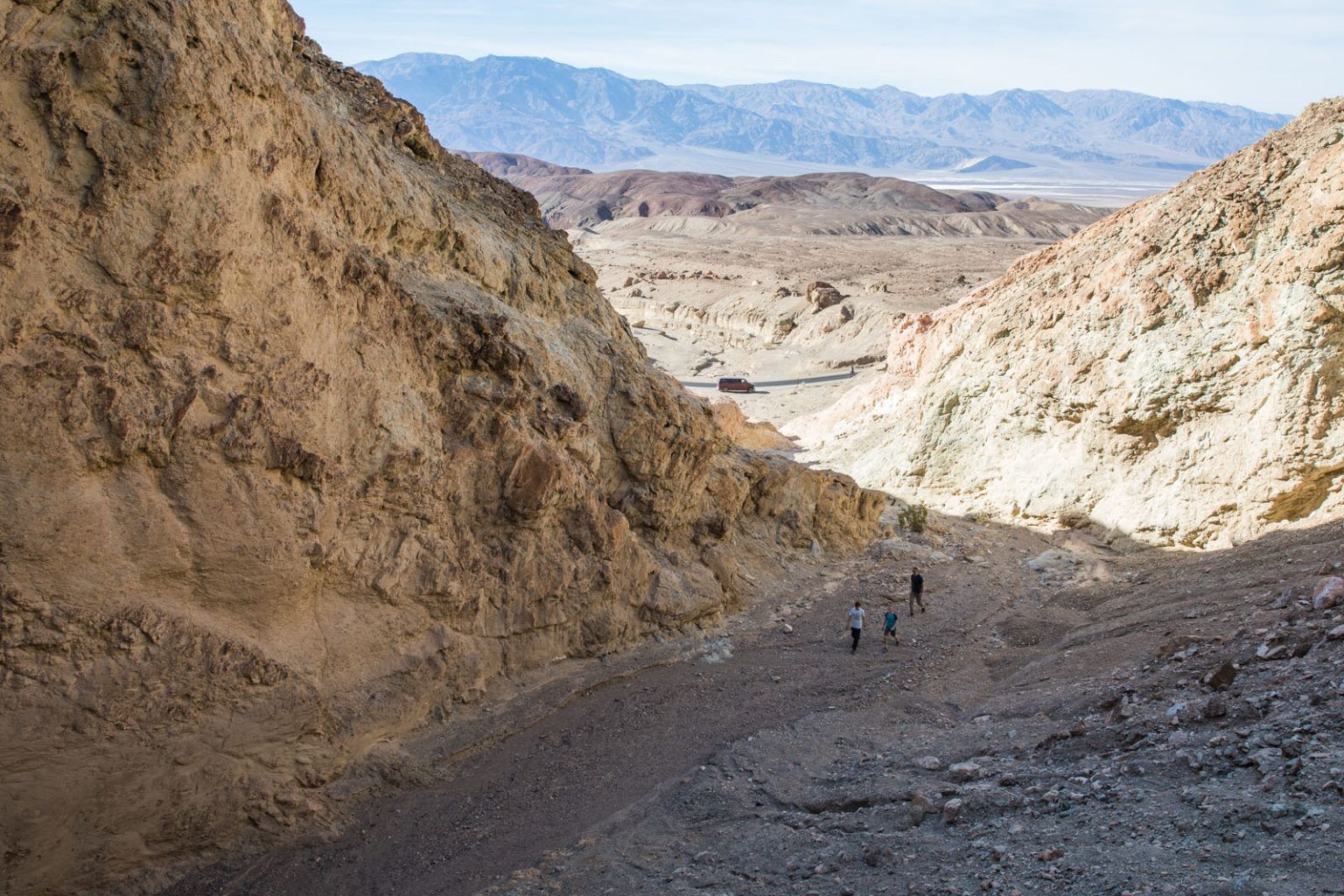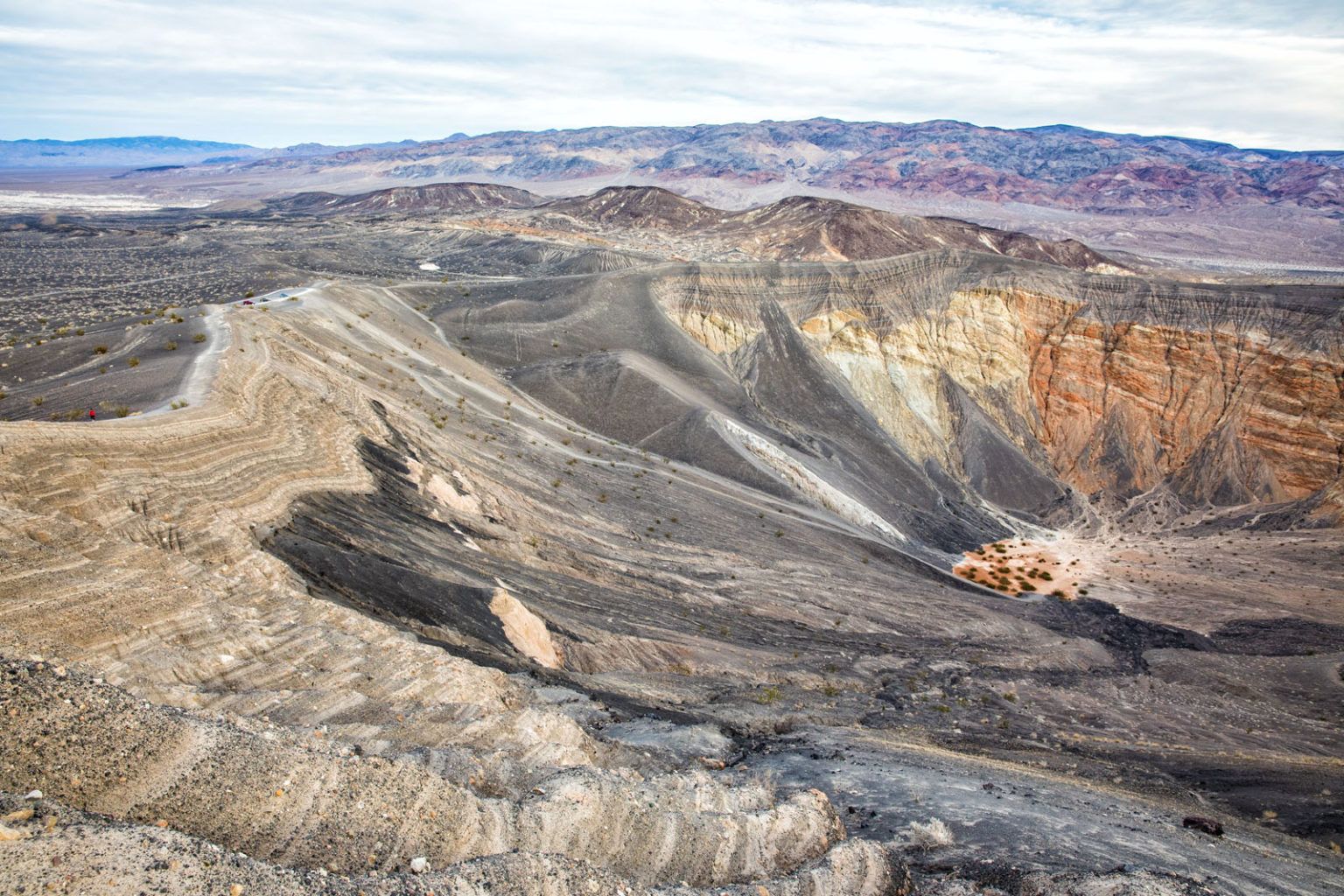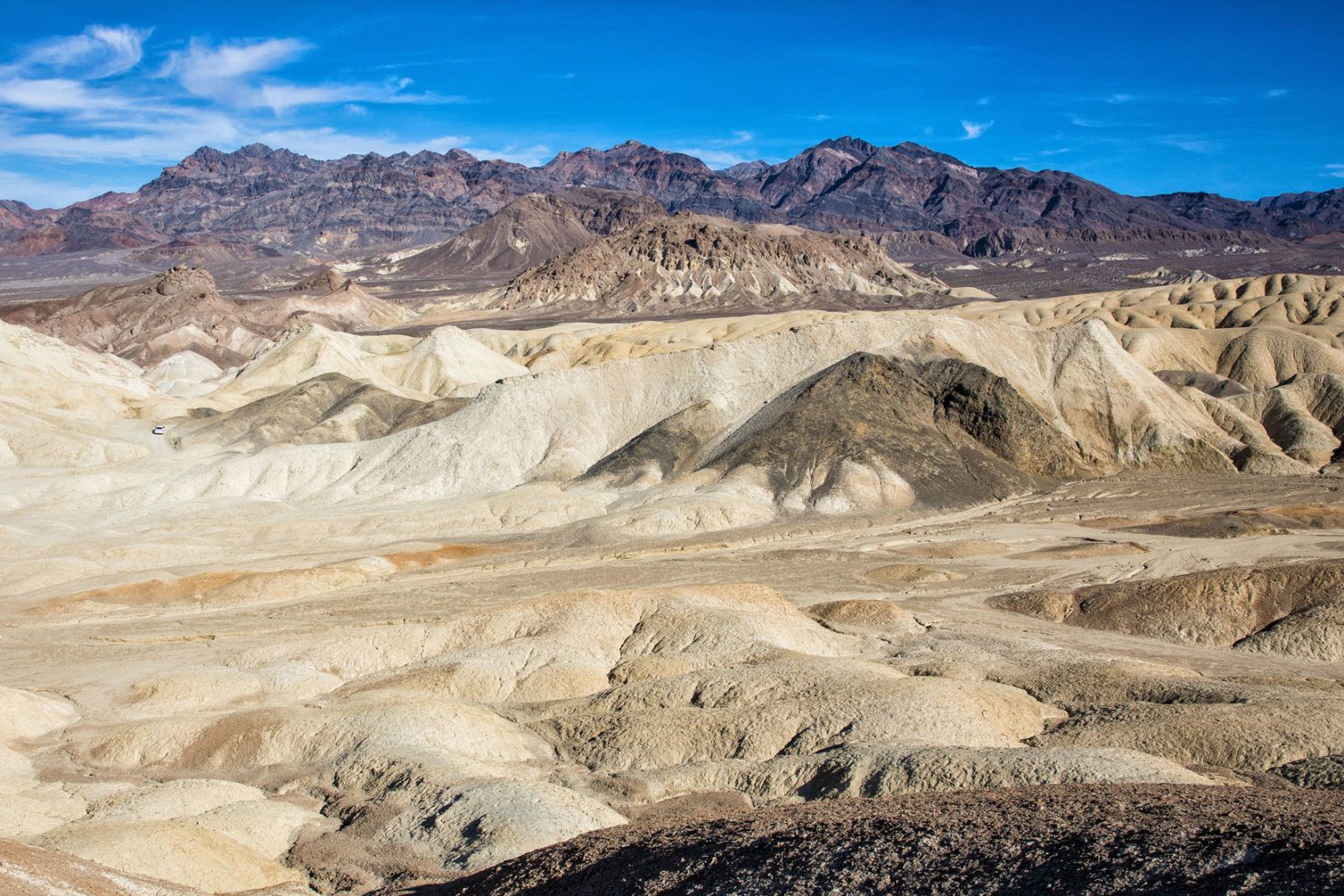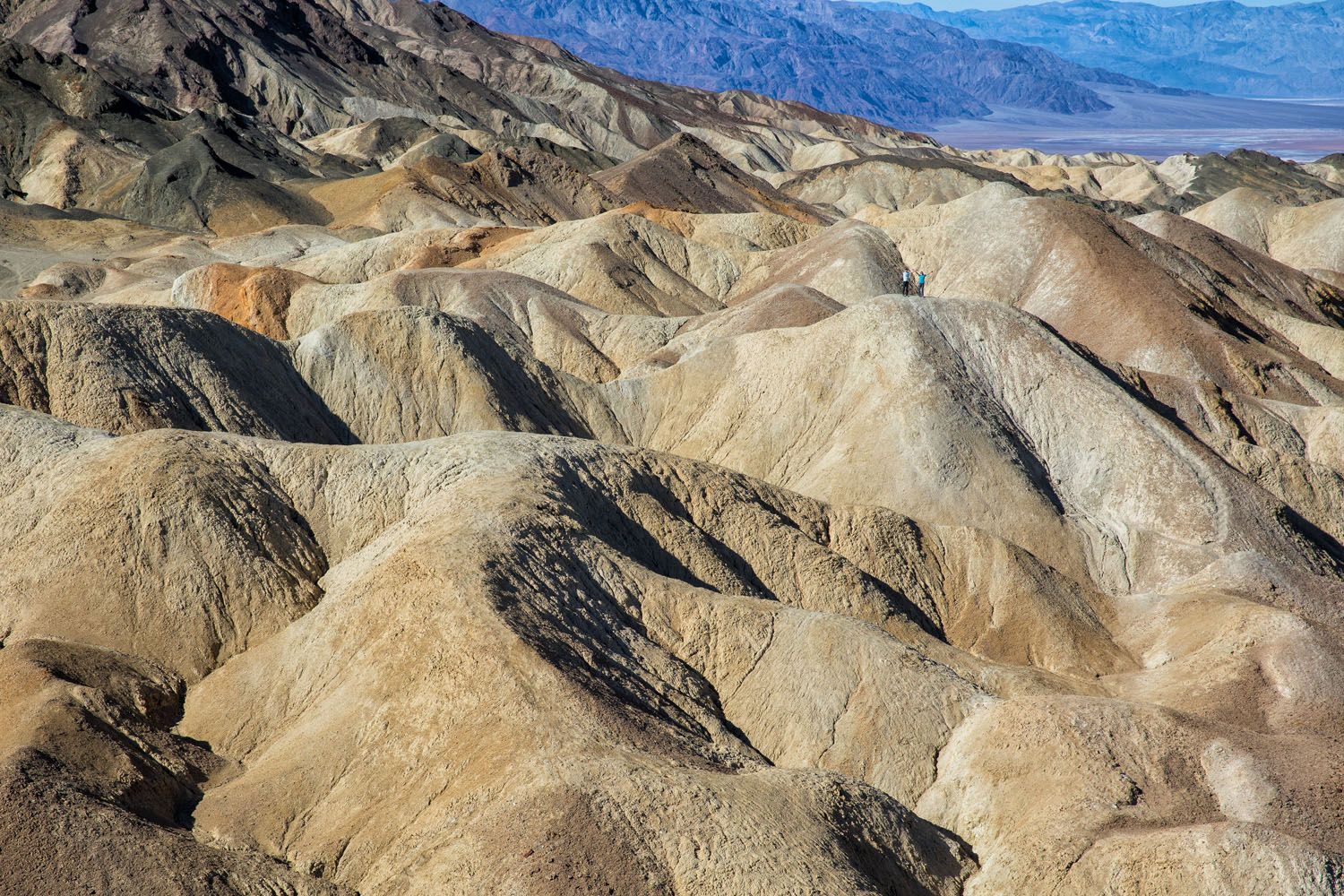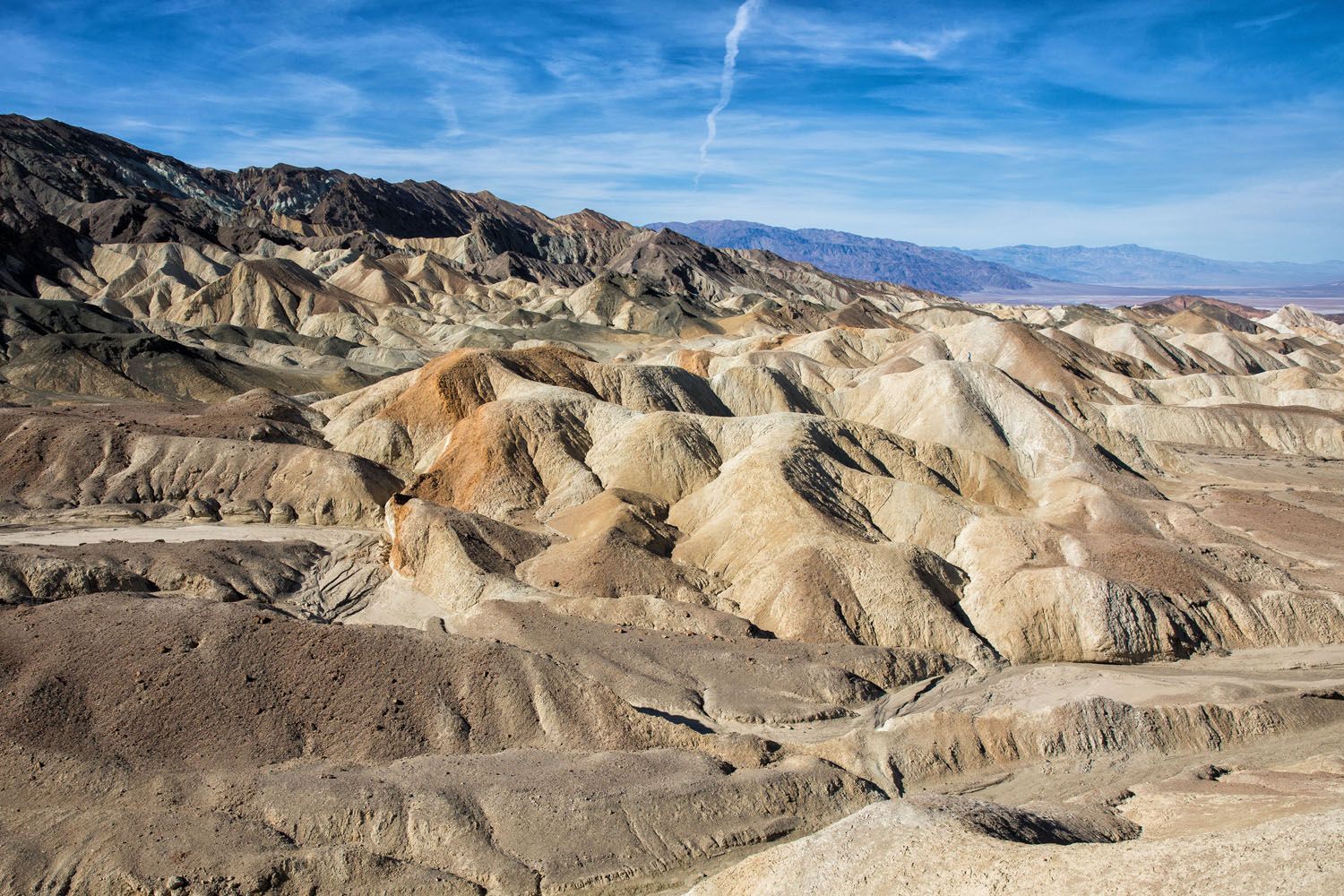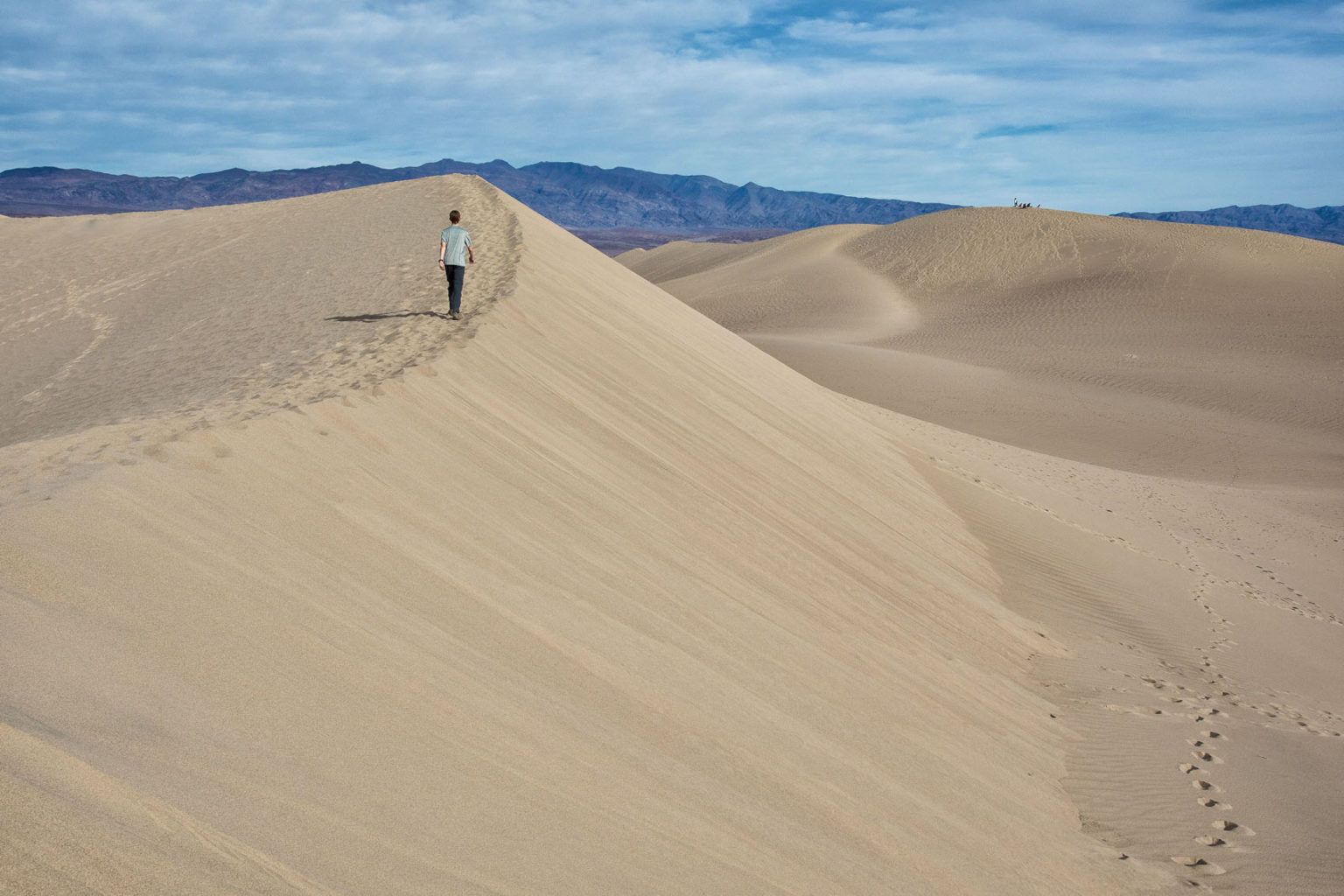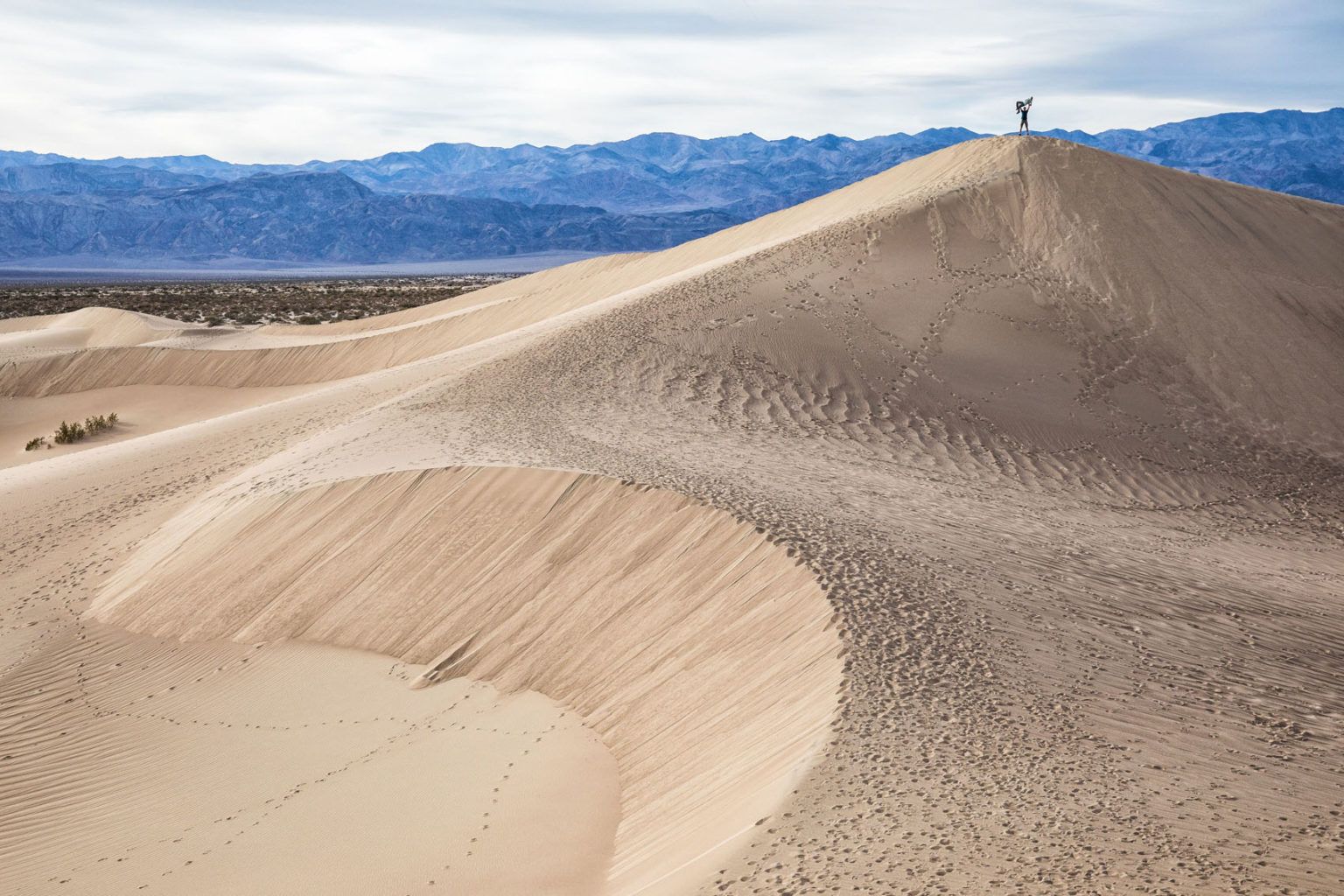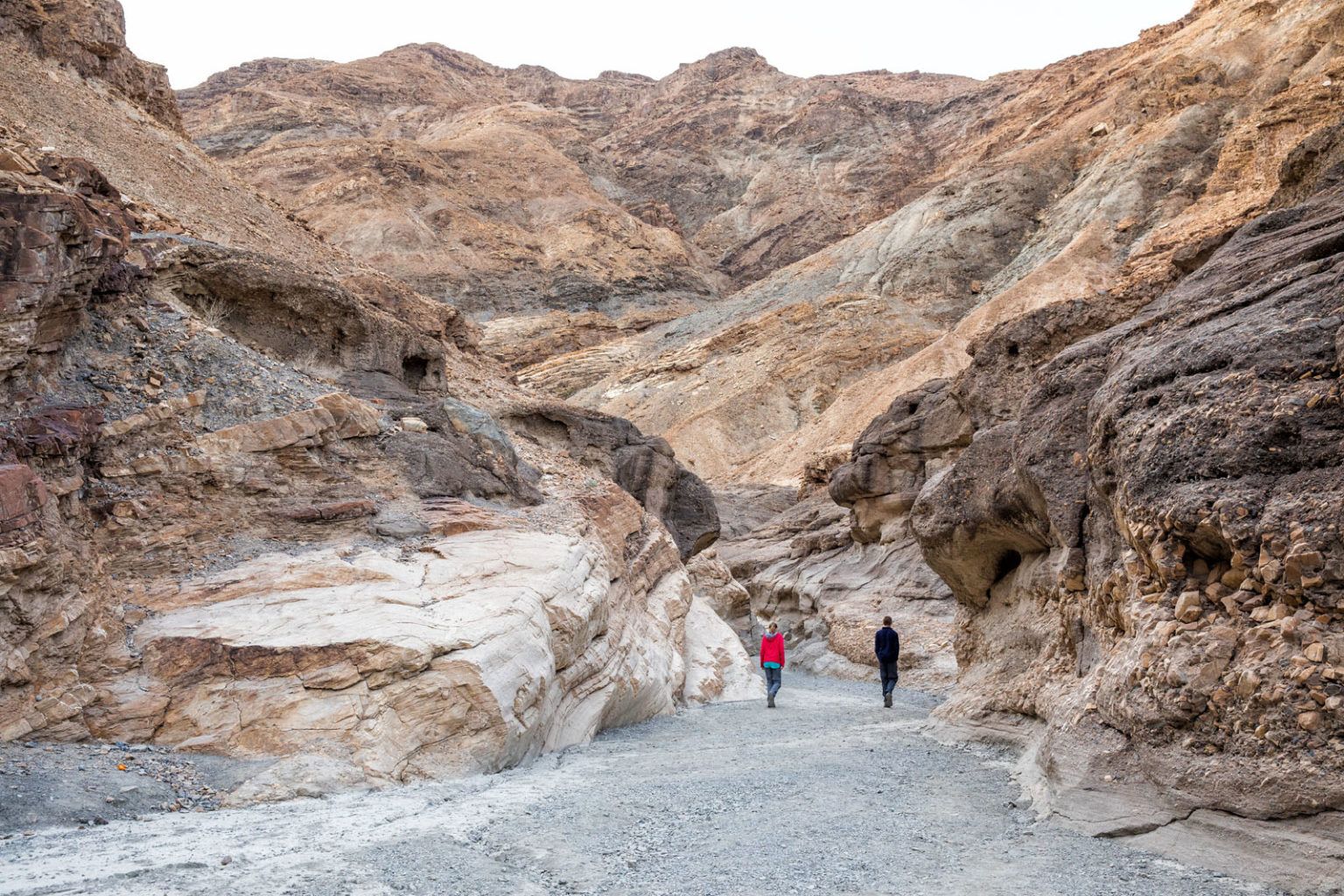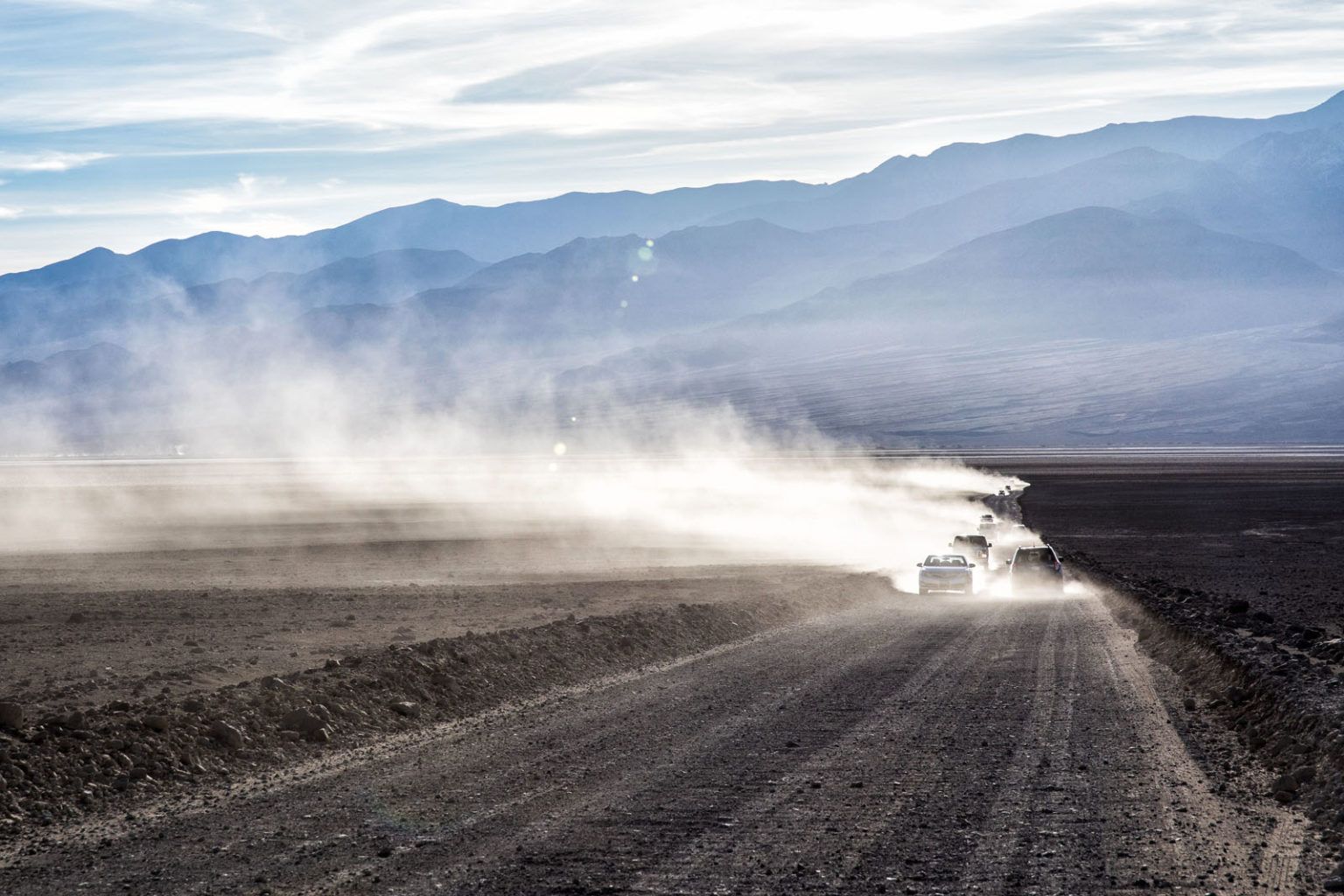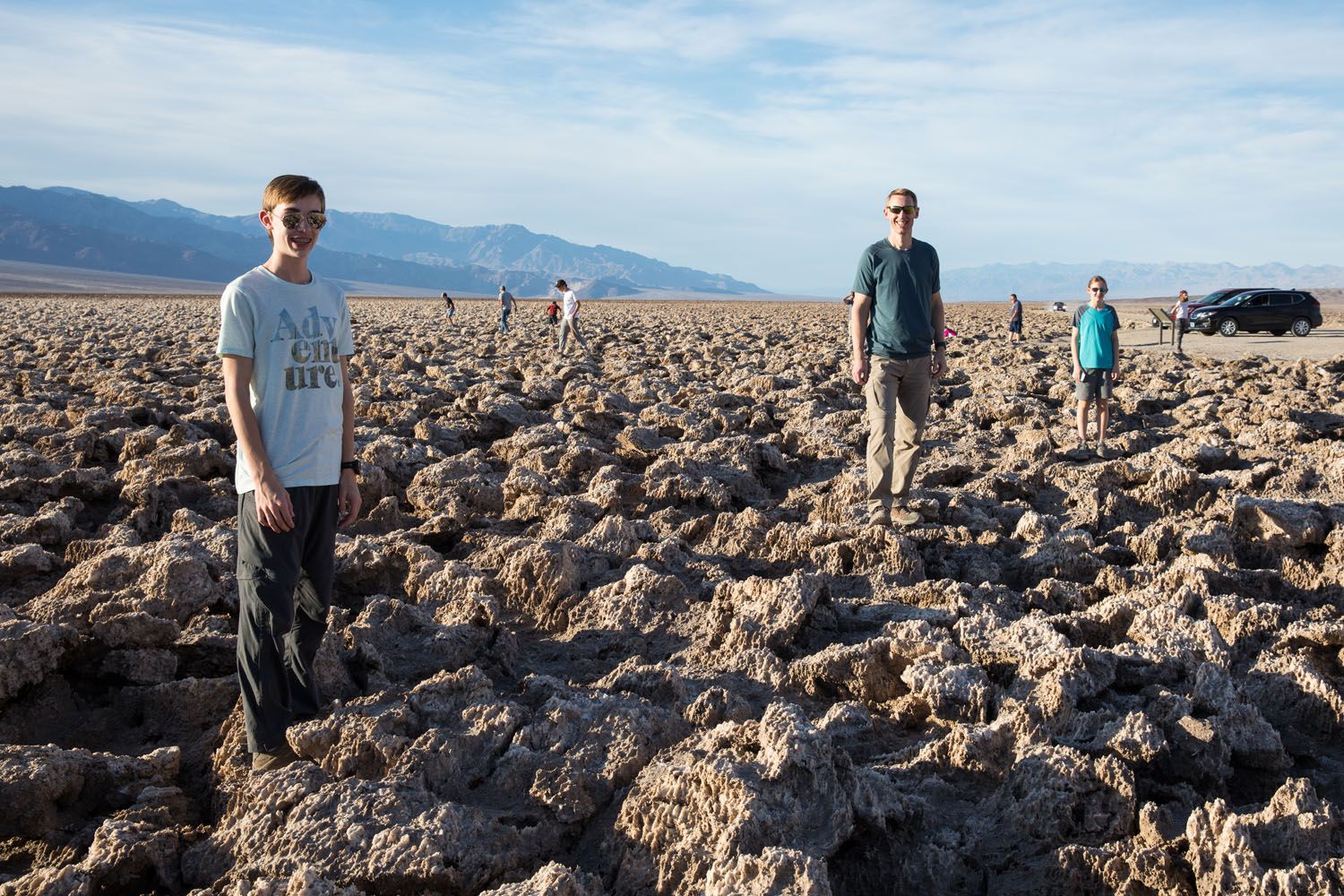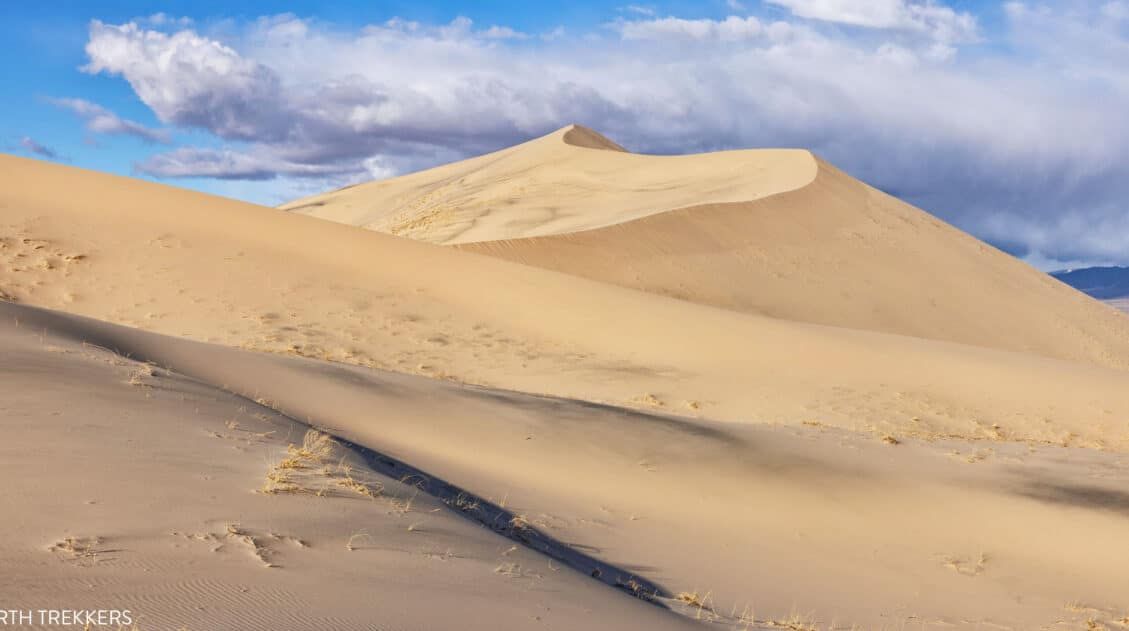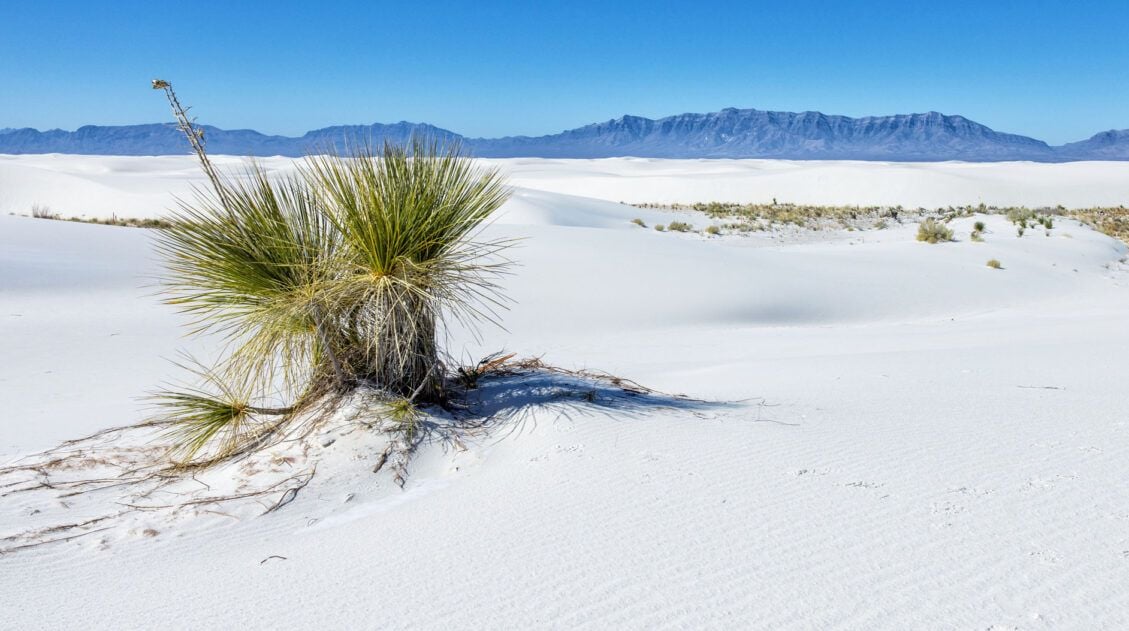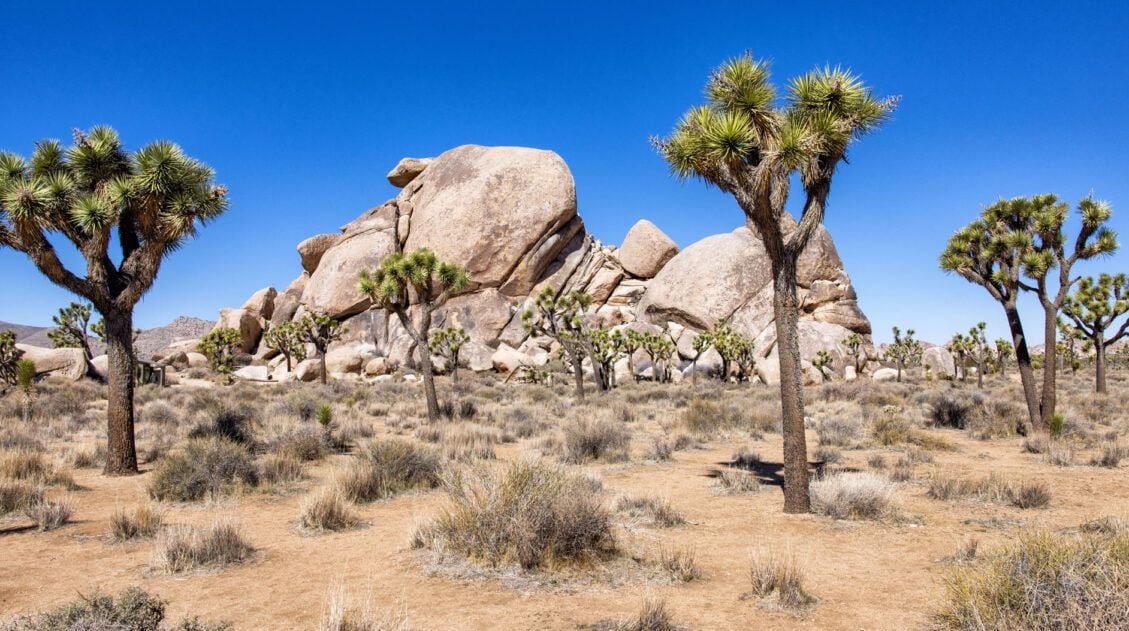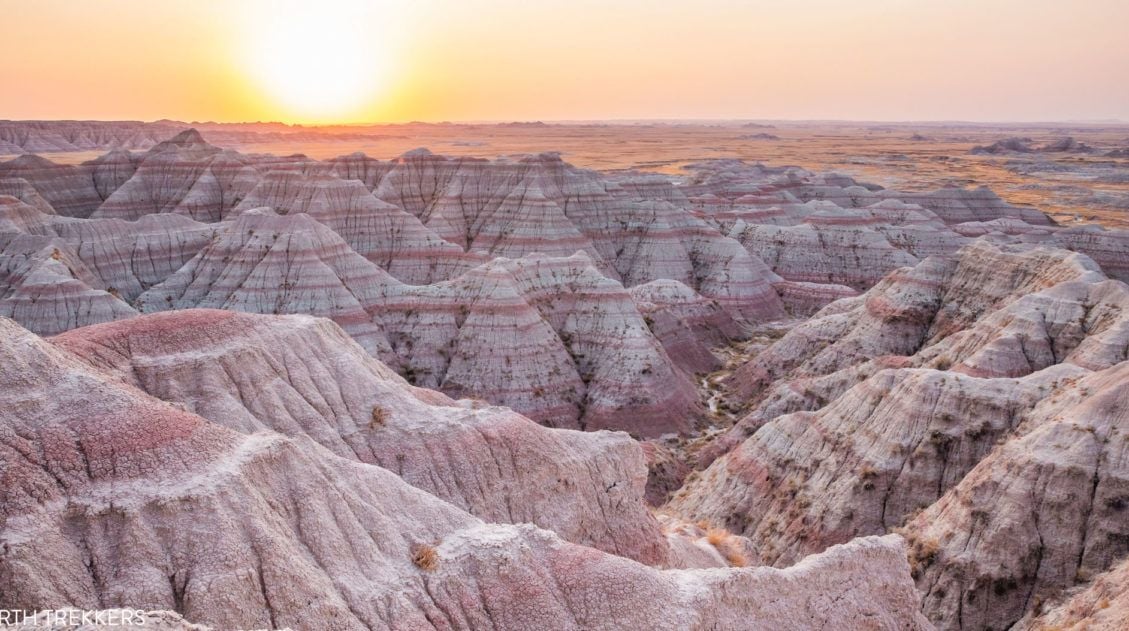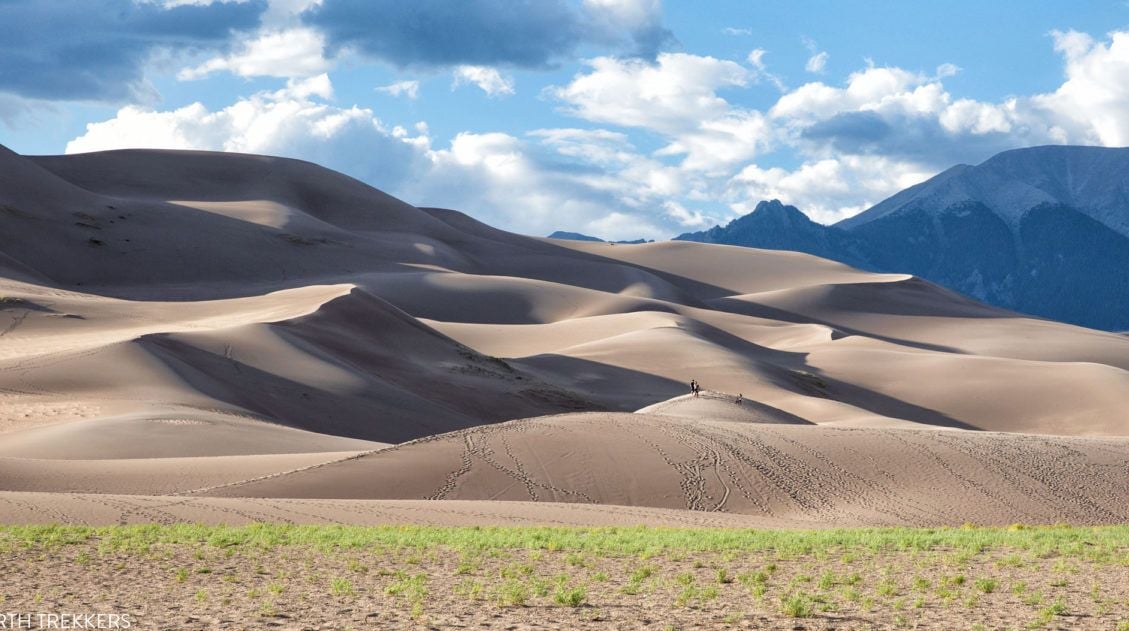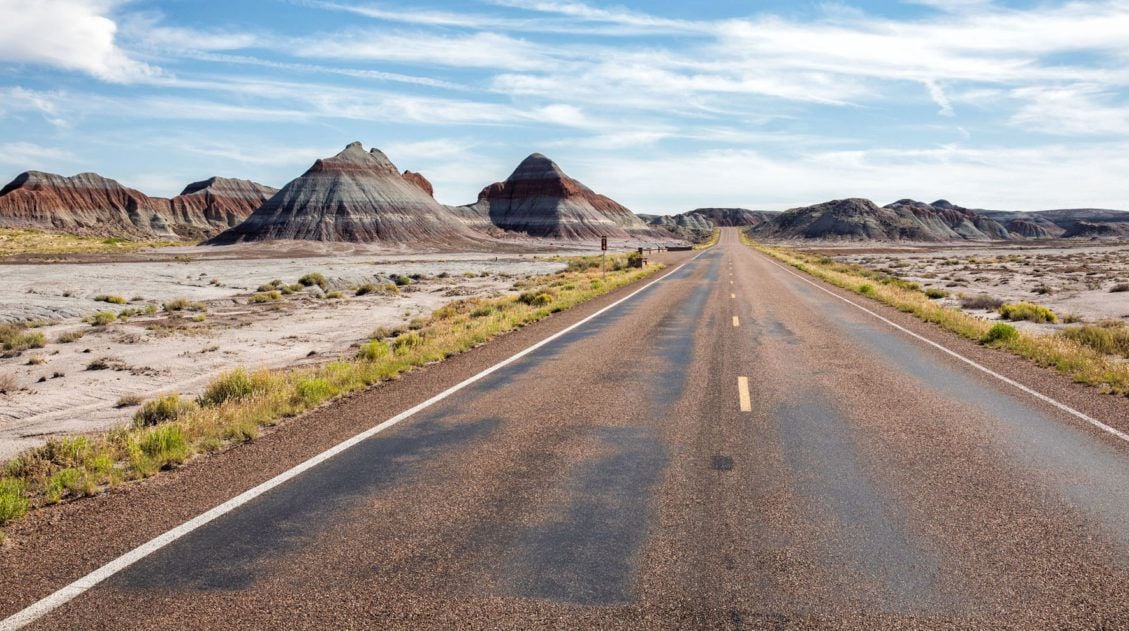Death Valley National Park
Death Valley is the hottest, driest, and lowest place in the United States. But don’t let its mysterious name and seemingly barren landscape discourage you from planning a trip here. This park is full of wonderful surprises.
With barren salt flats, towering mountains, mysterious sailing stones, shifting sand dunes, rainbow-colored mountains, and canyons to explore, there is a lot to do here.
Drive out to Racetrack Playa and learn how the boulders slide across the desert landscape. Stand at the lowest part of the United States at Badwater Basin and visit Furnace Creek, which holds the record for the hottest recorded temperature in the world. Hike on hills of borax, explore twisting canyons, visit a desert oasis, and slide down the sand dunes.
Death Valley is one of the most unusual national parks in the United States…I hope you enjoy learning about and exploring this wonderful treasure.
Death Valley National Park Stats
Founded: October 31, 1994
Annual Visitors: 1.1 million in 2023
Size: 3.4 million acres. This is the largest national park outside of Alaska.
Location: California and Nevada
Entrance Fee: $30 per vehicle, valid for 7 days
Notable Fact: Death Valley National Park is also a UNESCO Biosphere Reserve.
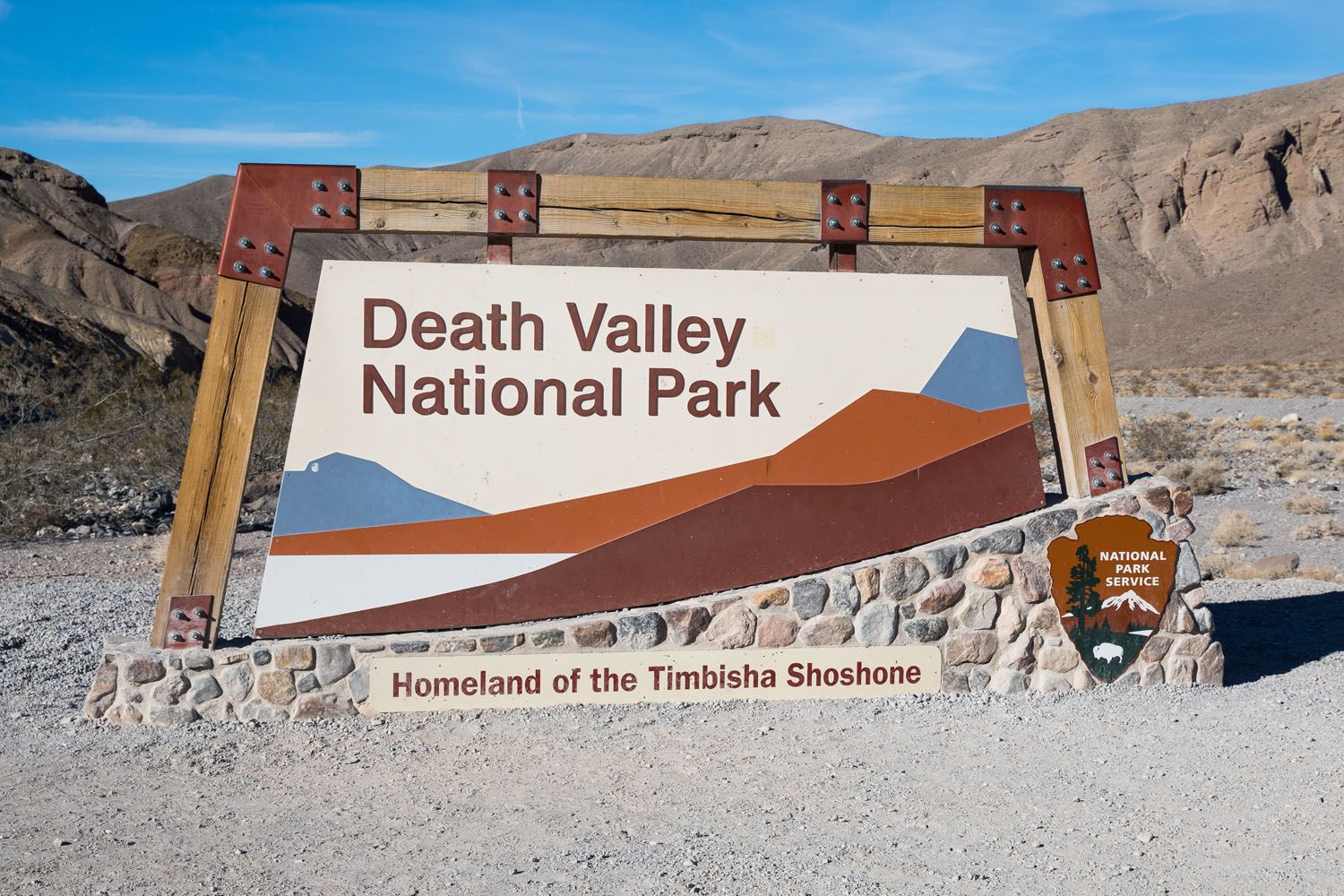
Top Experiences in Death Valley
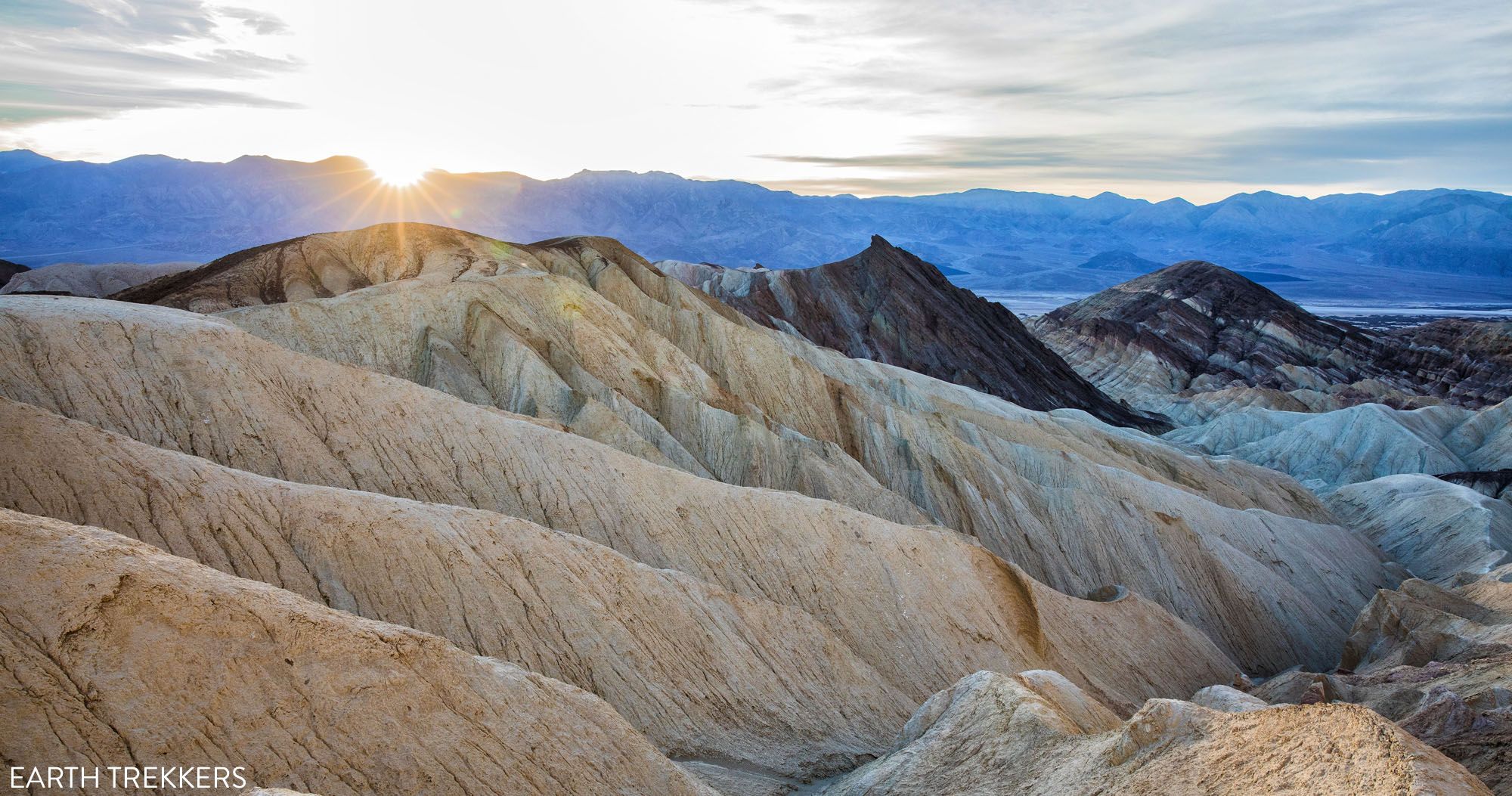
20 Epic Things to Do in Death Valley National Park
There are many wonderful things to do in Death Valley and some of them just may surprise you. Here’s the full list.
Zabriskie Point. This is one of the most iconic views in Death Valley. From here, gaze out over the Badlands and you have the option to hike one of the trails into the hills.
Visit Badwater Basin. Badwater Basin is the lowest point in the United States, sitting 282 feet below sea level. From the parking lot, a wide, flat trail heads out into the salt flats. This is also a very cool photography spot and from here you have the chance to take some very unique photographs.
Dante’s View. This is one of the best viewpoints in Death Valley National Park. From this vantage point, you have panoramic views over the park and an aerial view of Badwater Basin.
The Mesquite Flat Sand Dunes. Surrounded by purple mountains are sand dunes that create a natural playground for kids and a wonderfully photogenic landscape for photographers.
See Artist’s Palette on Artist’s Drive. Artist’s Drive is a 9-mile scenic drive through one of Death Valley’s very unique landscapes. There are many places to stop to enjoy the view and take a photo, but the best spot is Artist’s Palette, where you can see the pink, aqua, and purple hills.
Go Hiking in Golden Canyon. This short, fun hike takes you through a golden canyon to the base of Manly Beacon. For an even better experience, make this hike a loop, adding on Gower Gulch.
Walk a Lap around Ubehebe Crater. Ubehebe Crater is a volcanic crater in Death Valley. It is well worth a visit, especially if you have never seen a caldera before. You can view the crater from the parking lot, hike down into the crater, or walk around the rim (1.5 miles).
Hike to Telescope Peak. Telescope Peak is the highest peak in the park, at 11,043 feet (3,366 meters). To get to the peak, it’s a tough 14-mile hike but once at the top, you can see the lowest point in the United States (Badwater Basin) and the highest peak in the lower 48 states (Mount Whitney).
View the Night Sky. Death Valley has some of the darkest night skies in the United States. With its remote location far from cities and small towns, this is an amazing place to gaze up at the night sky. Badwater Basin, the Mesquite Flat Sand Dunes, and Harmony Borax Works all make great places to view the night sky.
Hike to Darwin Falls. Darwin Falls is a year-round waterfall in Death Valley National Park. To get here, you will hike through an oasis, a much different landscape that what you see in the rest of the park. It is a 2-mile round trip hike that takes about an hour to an hour and a half.
ULTIMATE ADVENTURE
Racetrack Playa is the place to see those mysterious sailing stones…the large rocks that somehow glide over a dry lakebed, leaving imprinted trails behind them. To get here, you will drive 27 miles on a rough, unpaved road. You must have a vehicle with high clearance and a 4×4 is recommended. It’s a rough ride to get here, but it is one of the most unique and wonderfully bizarre places in the United States.
Learn More About Death Valley
5 Reasons Why Death Valley Should be the Next National Park You Visit
When you think of Death Valley, what is the first thing that comes to mind? A barren desert landscape, crawling with scorpions and rattlesnakes? Yes, you can find that here, but there is so much more to Death Valley National Park than a forbidding desert landscape. We spent several days touring the park and fell […]
How to Visit Racetrack Playa in Death Valley National Park
Death Valley National Park is filled with unusual spots to visit and the Racetrack Playa may be one of the most bizarre. This is the place to see those mysterious sailing stones…the large rocks that somehow glide over this dry, muddy surface, leaving imprinted trails behind them. This is not a spot you can just […]
Hiking the Golden Canyon – Gower Gulch Loop in Death Valley
The Golden Canyon – Gower Gulch Loop is an easily accessible, enjoyable hiking trail in Death Valley. Hike through sandstone canyons, enjoy the view from Manly Beacon, and explore the golden mudstone hills that make this part of Death Valley look so interesting. If you want to add a hike to your Death Valley to-do […]
Grotto Canyon Hike in Death Valley: Are You Up for the Challenge?
If you are looking for a challenging hike in Death Valley, Grotto Canyon may be perfect for you. Hike through narrow canyons, navigate your way up and over difficult obstacles, and enjoy this quiet, seldom visited trail in Death Valley. This is a very adventurous hike and only those with prior hiking experience should attempt […]
Hiking Mosaic Canyon in Death Valley
Mosaic Canyon is a fun hike to do in Death Valley National Park. There is just enough rock scrambling and navigating through obstacles to keep things interesting. Mosaic Canyon narrows and widens several times throughout the hike so the views are always changing. This tends to be one of the more popular hikes in Death […]
When To Visit Death Valley National Park
Springtime is the most popular time to visit Death Valley. If the valley received enough rainfall during the winter months, you get to see the legendary superbloom (usually the end of March into early April).
The winter months are another great time to visit Death Valley. Daytime temperatures are very pleasant (65 to 70°F) although it can get cold at night. There may be brief periods of rain during the winter months, and if this occurs during your visit, you may want to skip Racetrack Playa.
During the summer months, be prepared for incredibly hot conditions with temperatures getting to 120°F or higher. Skip the hikes and instead drive through the park, getting out at the viewpoints.
Autumn has warm temperatures and clear skies. As the heat fades, visitors start reappearing.
Death Valley National Park appears in our Best US National Parks Month-By-Month series as a great park to visit in January, April, and December.
12 Best National Parks to Visit in January 2025 (USA)
Planning a trip to the US national parks in January but don’t know which ones to visit? In January, much of the country is cold and covered in snow, but there are plenty of parks you can visit to escape the wintry conditions. In this article, we cover the best national parks to visit in […]
14 Best National Parks to Visit in April 2025 (USA)
Which are the best national parks to visit in April? In this guide, we list 14 wonderful parks in the USA. On this list are a few of the most popular parks in the USA, several great spring break destinations, and a few remote, quieter parks to visit. About this National Park Series This article […]
10 Best National Parks to Visit in December 2025 (USA)
Which are the best national parks to visit in December? In this guide, we list 10 beautiful national parks in the USA. Whether you are planning a family getaway during winter break or a vacation before the holiday season rolls around, we have lots of great ideas for you. Go hiking in Utah, gaze across […]
How Many Days Should You Spend in Death Valley?
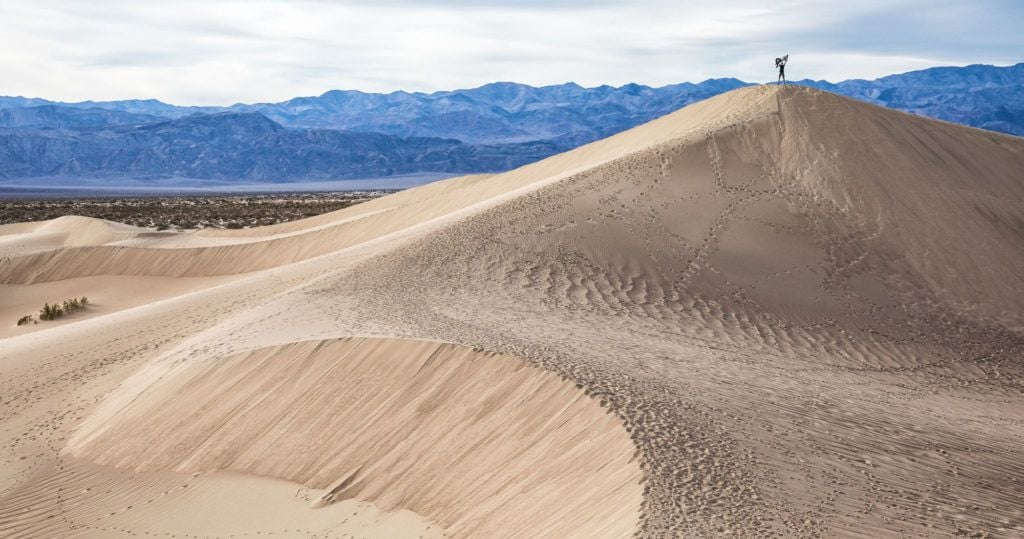
Exactly How to Plan Your Death Valley Day Trip from Las Vegas
For those with just one day in Death Valley, you can do quite a bit. In fact, Death Valley makes a great day trip from Las Vegas. Here’s how to do it.
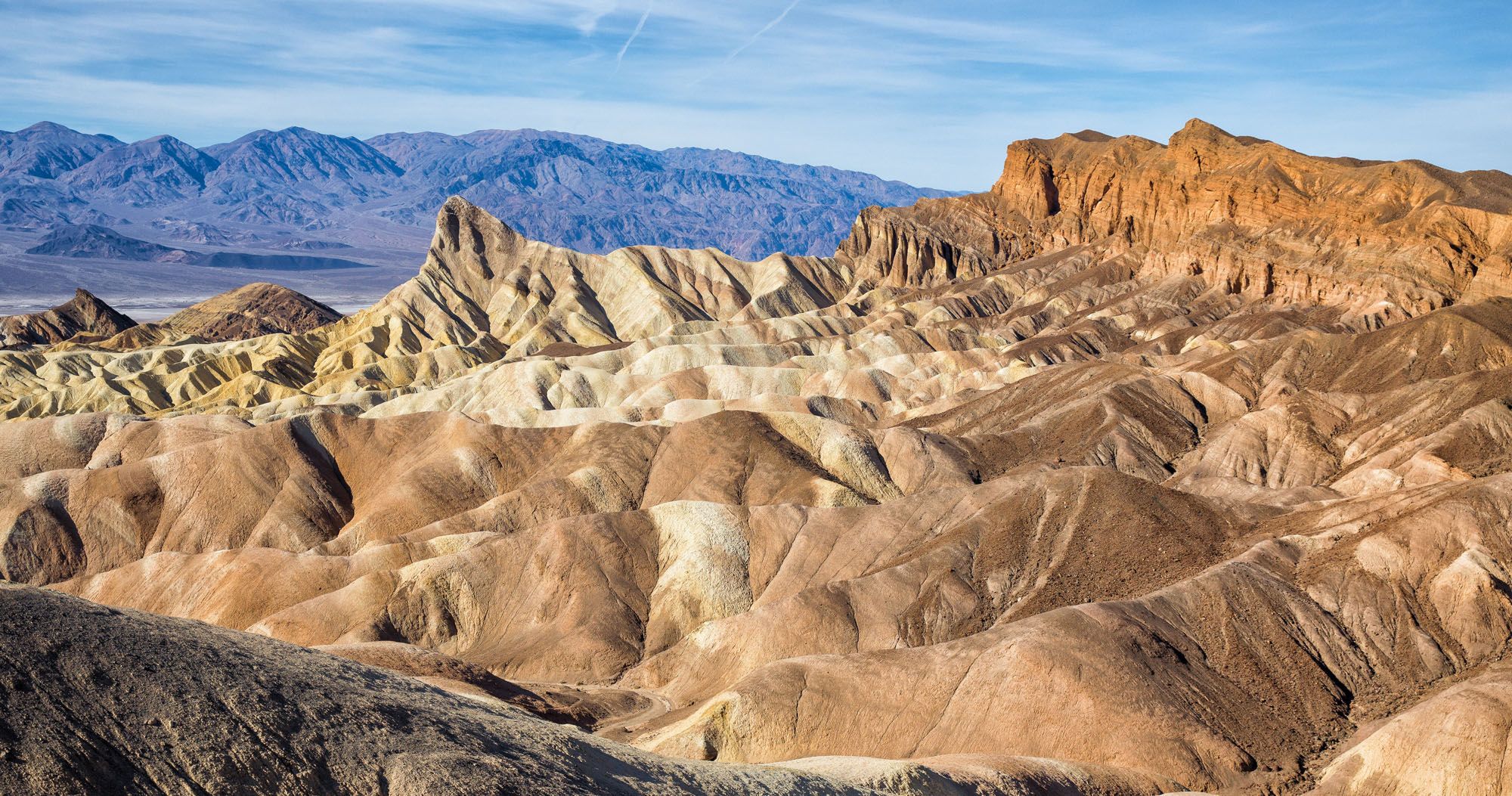
2 Amazing Days in Death Valley: Itinerary from Las Vegas
With two days, you can visit the highlights of the park (Badwater Basin, Zabriskie Point, Mesquite Flat Sand Dunes, Artist’s Drive, Dante’s View, and Twenty Mule Team Canyon), hike one or two trails, and visit Racetrack Playa.
Road Trips with Death Valley
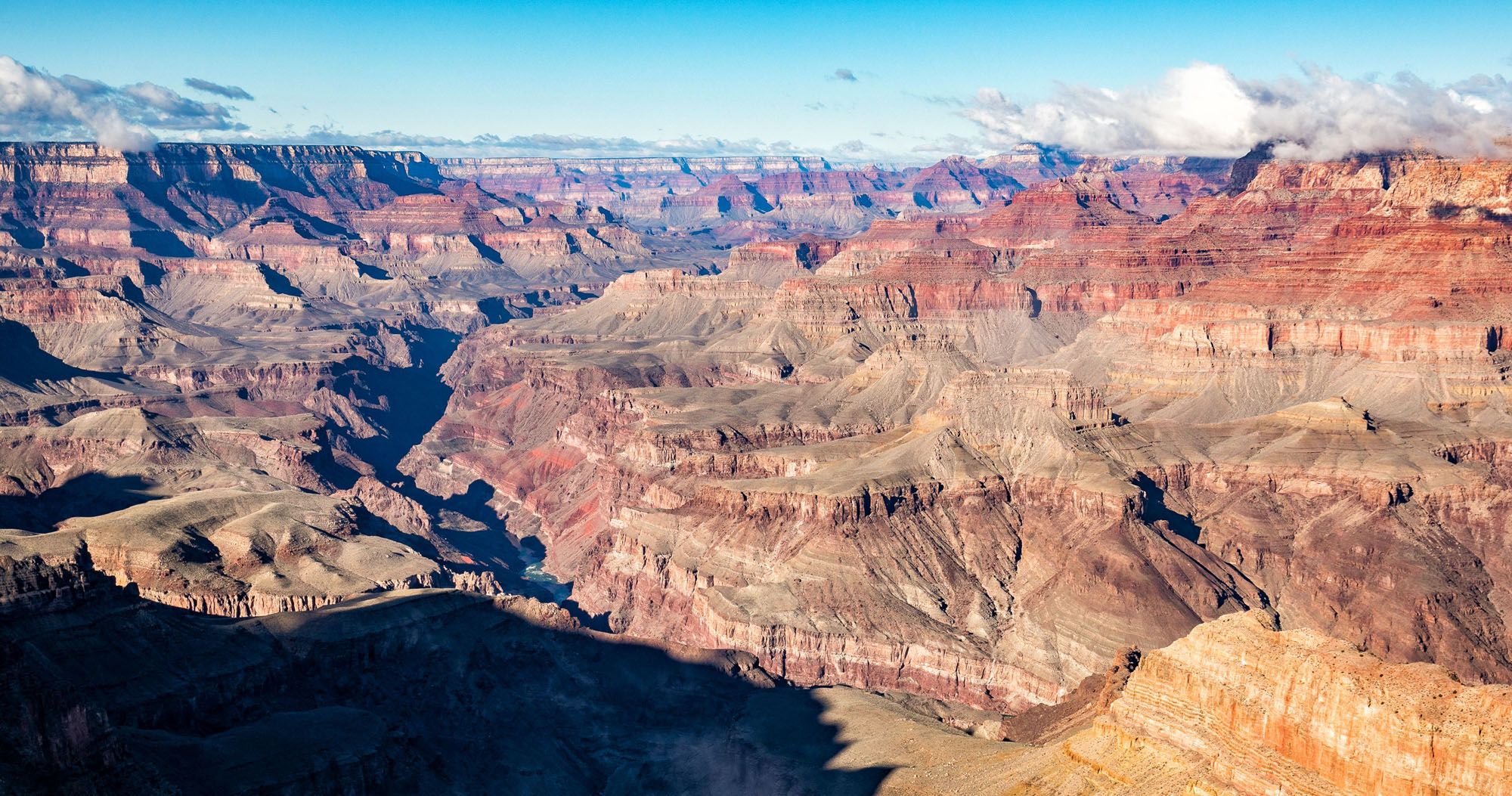
Grand Canyon Road Trip: 5 Itineraries from Las Vegas
Here are five sample itineraries, ranging from 5 to 10 days. All of these itineraries include Las Vegas and the Grand Canyon. Depending on the length of time of the itinerary, we also add in places like Zion National Park, Antelope Canyon, Sedona, Death Valley, and Monument Valley.
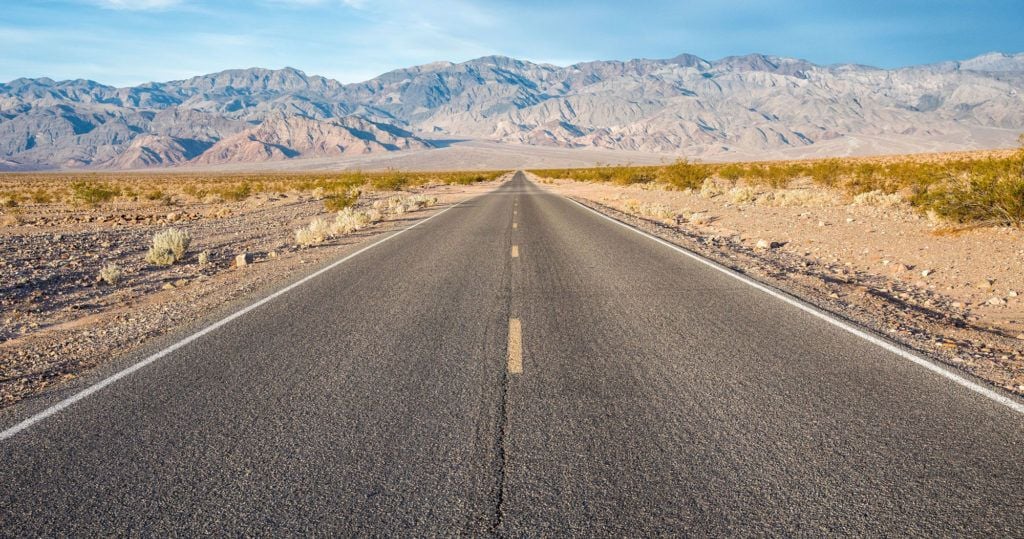
Las Vegas to San Diego 10 Day Road Trip Itinerary
Go on a National Park road trip, visiting both Death Valley National Park and Joshua Tree National Park on the drive. Or, you can spend some time in the Mojave National Preserve, which is home to a surprisingly wide variety of landscapes.
In this guide, we lay out several different ways to plan your southern California road trip, depending on your interests and how much time you have.
Did You Know?
Death Valley is the hottest, driest, and lowest place in the United States.
A scorching 134°F (57°C) was recorded in aptly named Furnace Creek on July 10, 1913, the hottest temperature ever recorded on Earth. Less than 2 inches of rain falls in Death Valley per year. Badwater Basin is the lowest spot in the United States, sitting 282 feet below sea level.
This diverse landscape has been used in a surprisingly large number of movies, the most famous being Star Wars: A New Hope. Many of the scenes of Tatooine were filmed in Death Valley.
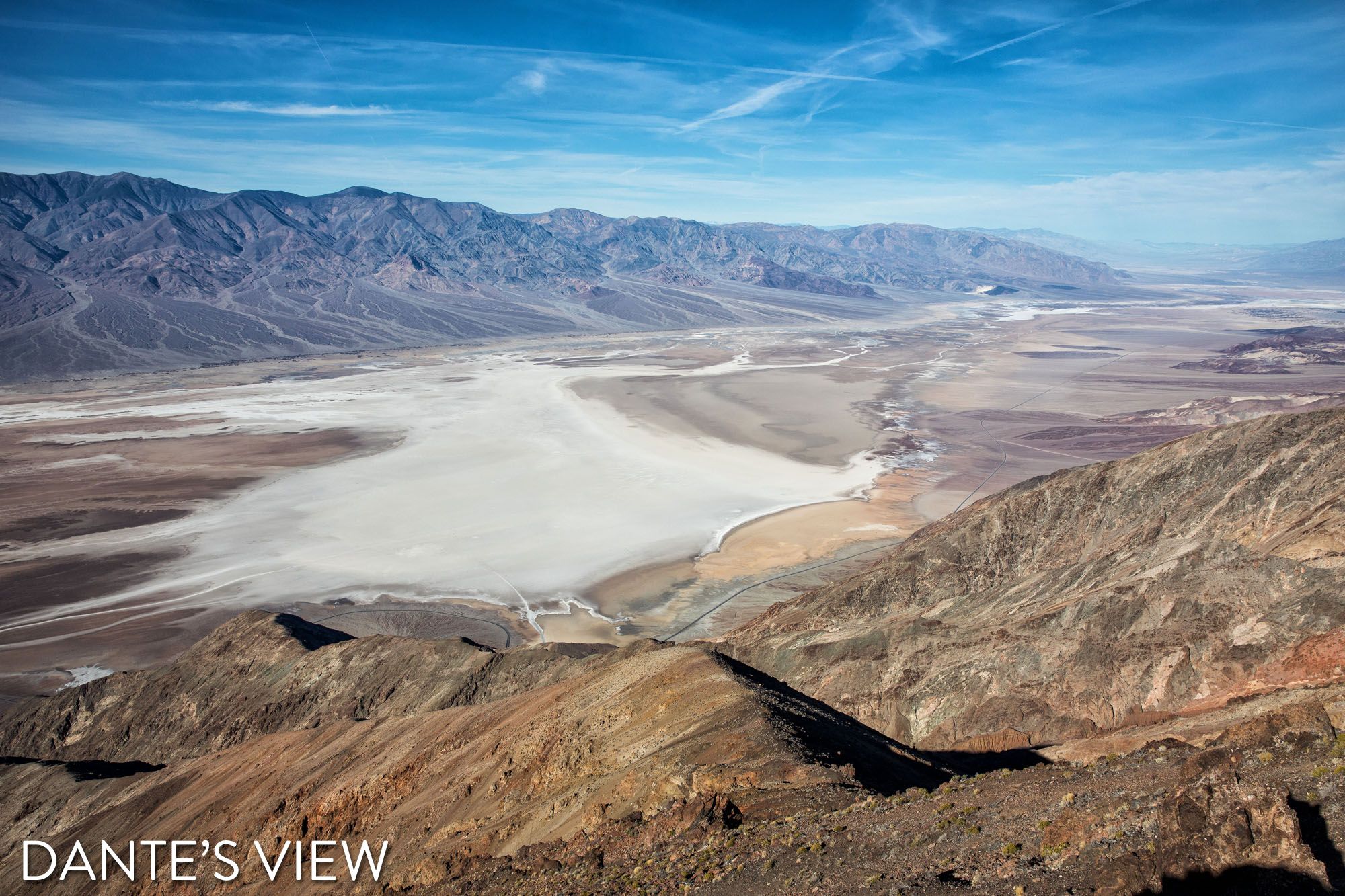
Death Valley National Park Map
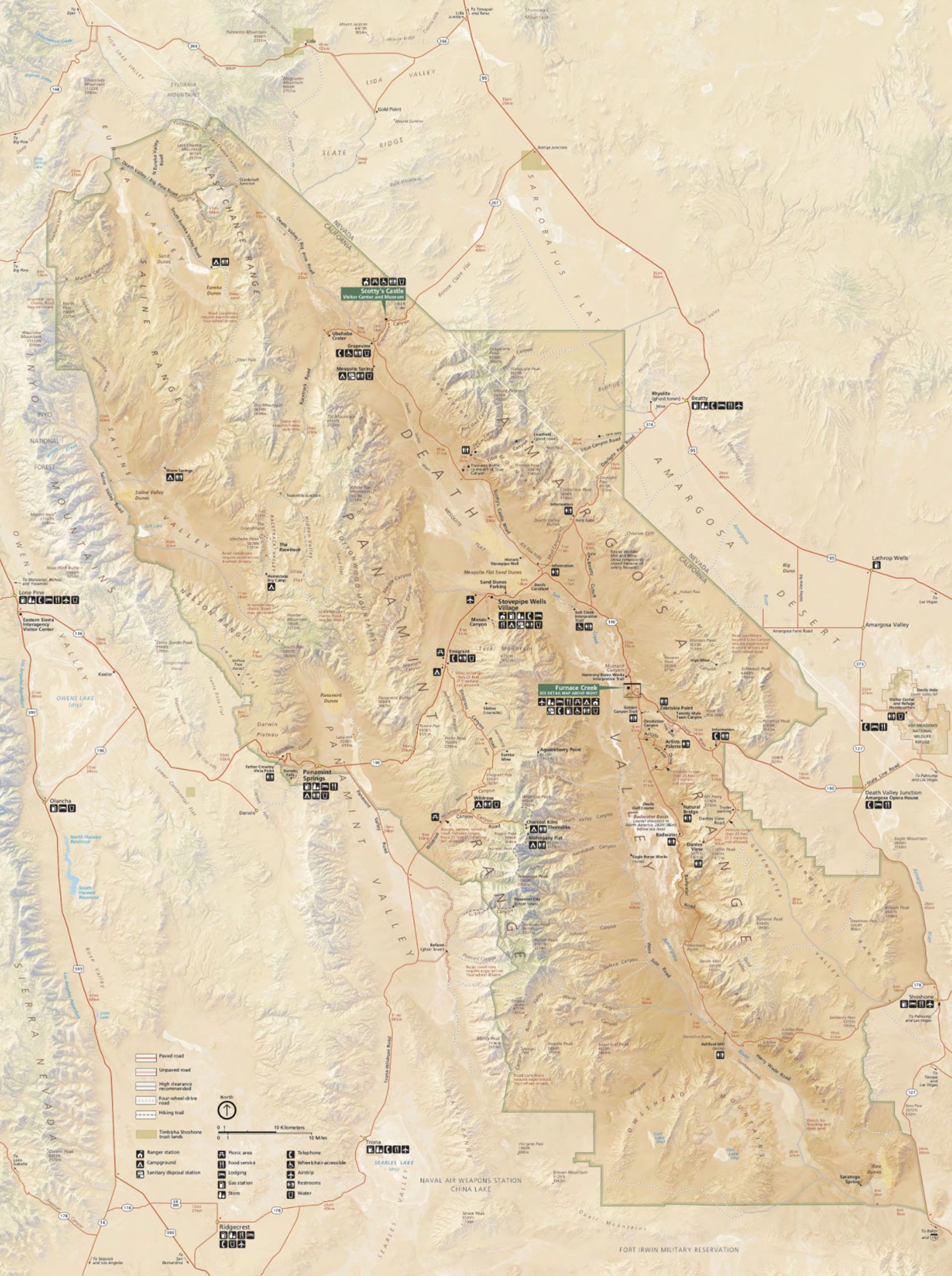
US National Parks List
In our US National Parks List, get information on all of the US national parks, including interesting facts, the most and least visited national parks, and a FREE printable national parks checklist with map.
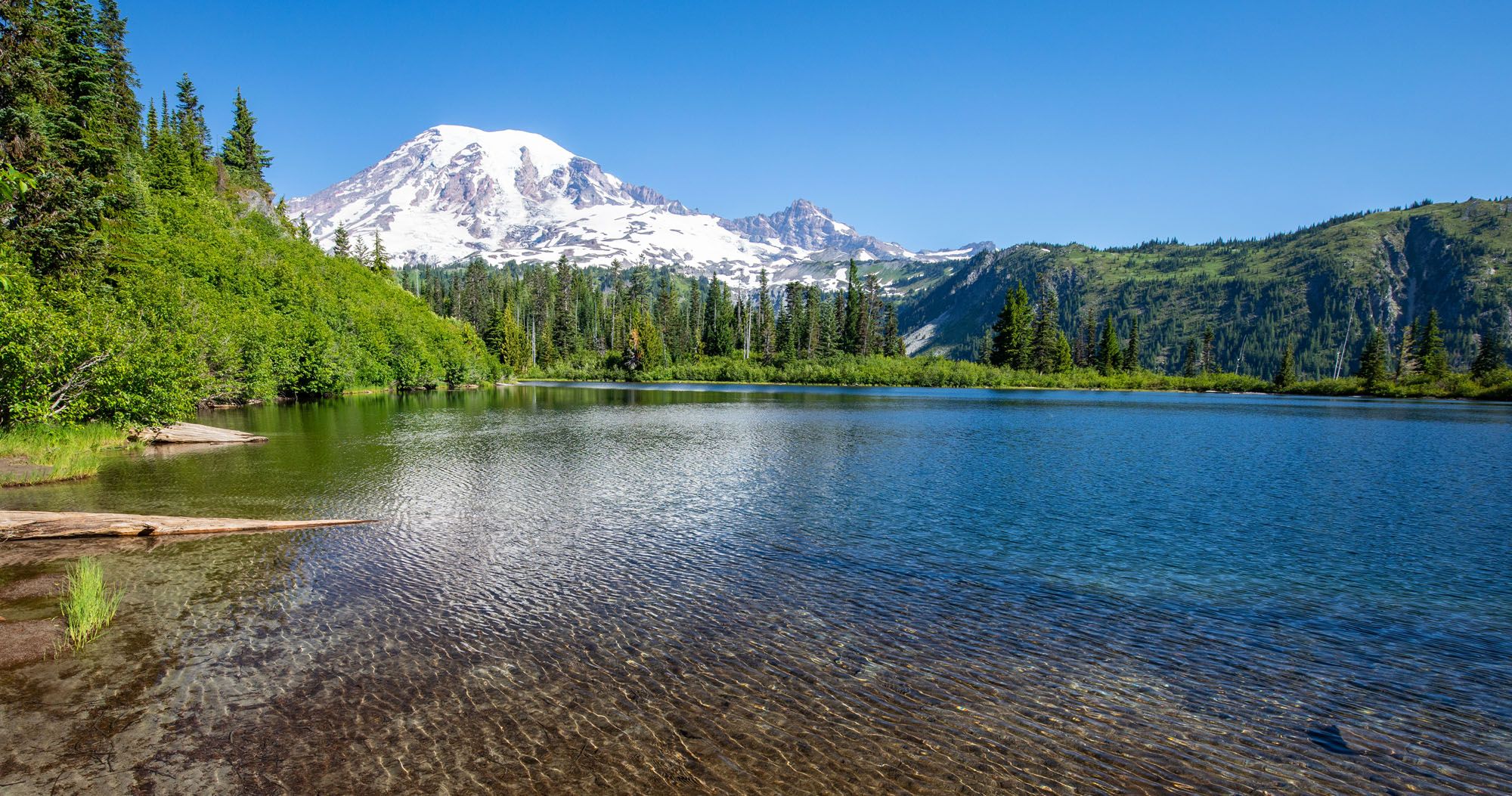
Ultimate US National Parks List for 2025 (+ Printable Checklist)
If You Like Death Valley, You’ll Also Like…
10 EPIC Things to Do in Mojave National Preserve
With enormous sand dunes, cinder cones, lava beds, and the densest population of Joshua Trees in the world, Mojave National Preserve is home to a wide variety of landscapes. This is a fun place to explore and makes a great addition to a southern California road trip. In this guide, we cover the best things […]
11 Amazing Things to Do in White Sands National Park
White Sands National Park is home to the largest gypsum dunefield in the world. These pure white dunes create a fun place to explore, for both kids and adults. Hike out into the dunes, learn about the wildlife that calls this park home, and go sledding on sand as white as the snow…these are just […]
10 Things to Do in Joshua Tree National Park on Your First Visit
With its desert scenery, hiking trails, rock climbing routes, hidden oases, scenic drives, and trees that look like they have been plucked from the pages of a Dr. Seuss book, Joshua Tree National Park is a joy to explore. In this guide, learn about the best things to do in Joshua Tree National Park on […]
15 Amazing Things to Do in Badlands National Park (+ Photos & Map)
Badlands National Park is a highly underrated park in the United States. The colorful buttes, spires, and pinnacles create one of the most photogenic landscapes in the country. Bison and bighorn sheep roam the largest mixed-grass prairie in the United States. The sunrises and sunsets are magical, the hiking trails are short and sweet, and […]
8 Amazing Things to Do at Great Sand Dunes National Park
Great Sand Dunes is a much different experience than many other national parks in the United States. Sure, there is hiking and amazing sunsets and ranger programs, but this park has a much different feel to it. It’s a small park and the list of things to do is very short. A few hours are […]
Petrified Forest National Park: Travel Guide & Itinerary
Petrified Forest National Park beat all of my expectations. I imagined a barren desert with a few colorful hills, some ancient, petrified stumps, and soaring temperatures in the early summer. Instead, we were treated to the colorful, uniquely beautiful hills of the Painted Desert, giant, petrified trees that puzzle the mind, and the chance to […]
